Carving a hillside into layered terraces instantly swaps slippery slopes for sculpted outdoor rooms, giving roots a place to anchor while runoff slows to a gentle seep. Engineers and gardeners agree that even a modest retaining wall or stepped bed can cut erosion dramatically and open up flat platforms for living, planting, and play. In climates where space and soil wash away with every storm, a well-planned hillside terraced garden can double your usable yard, create pockets of warmer air for tender crops, and showcase dramatic views without the back-breaking maintenance of mowing on a gradient. Whether you favour rustic timbers or sleek modern concrete, the following creative concepts prove that elevation is an asset waiting to bloom.
1. Stone-Retained Terraced Garden Levels for Rock-Solid Stability
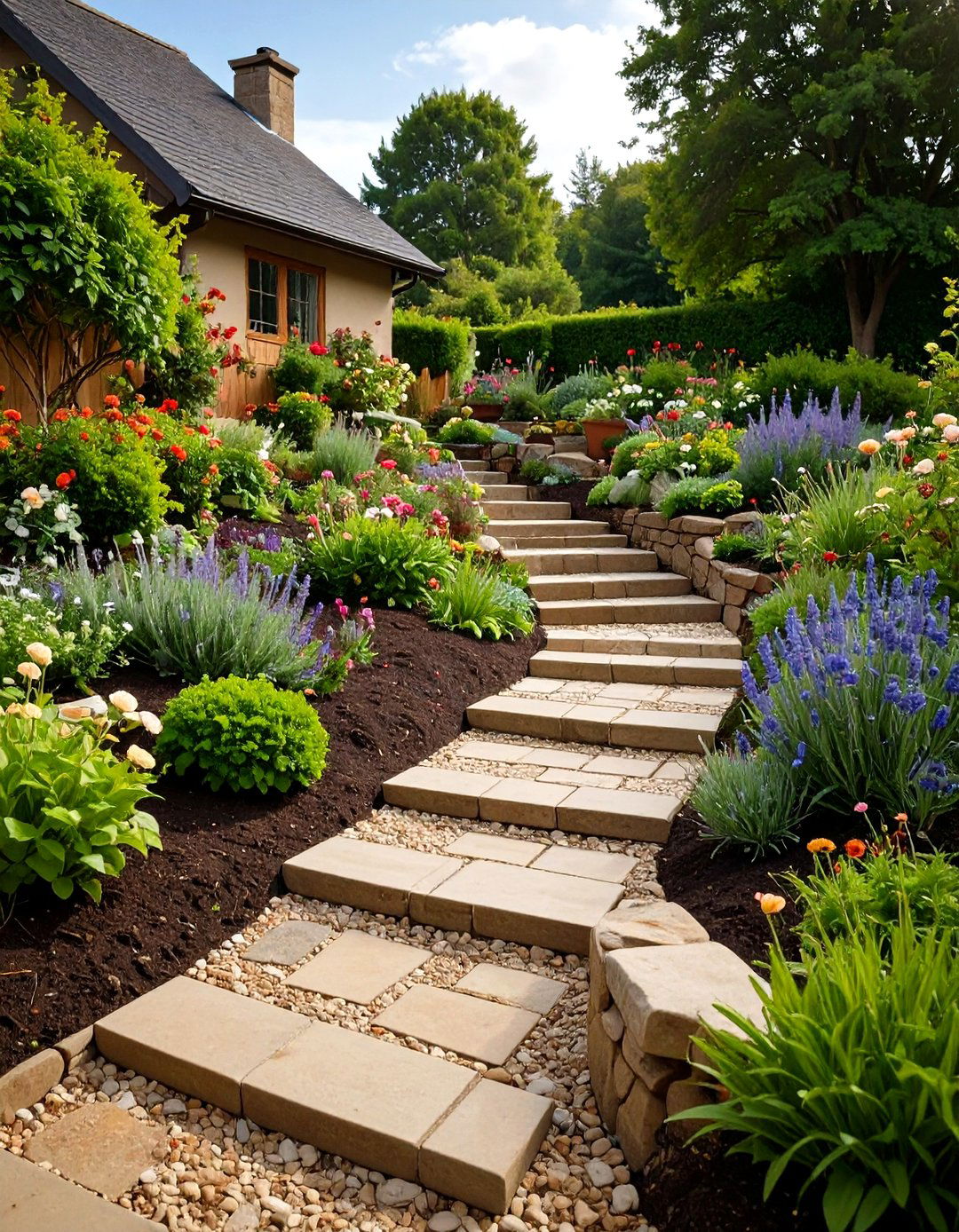
A solid stone retaining wall delivers the classic backbone of a hillside terraced garden, locking soil in place while lending timeless beauty. By stacking quarried or fieldstone blocks 60–90 cm high per tier, you break the slope into comfortable planting benches and create permeable joints that bleed off excess water rather than forcing it behind the wall. Filling the terrace backs with 150 mm of gravel improves drainage; topping with a mix of compost and loam invites everything from roses to rosemary to thrive in the captured microclimate. Add shallow French drains behind each wall and you will enjoy a landscape that endures freeze–thaw cycles without bulging or collapse.
2. Timber Sleeper Terraced Garden Beds for Rustic Warmth
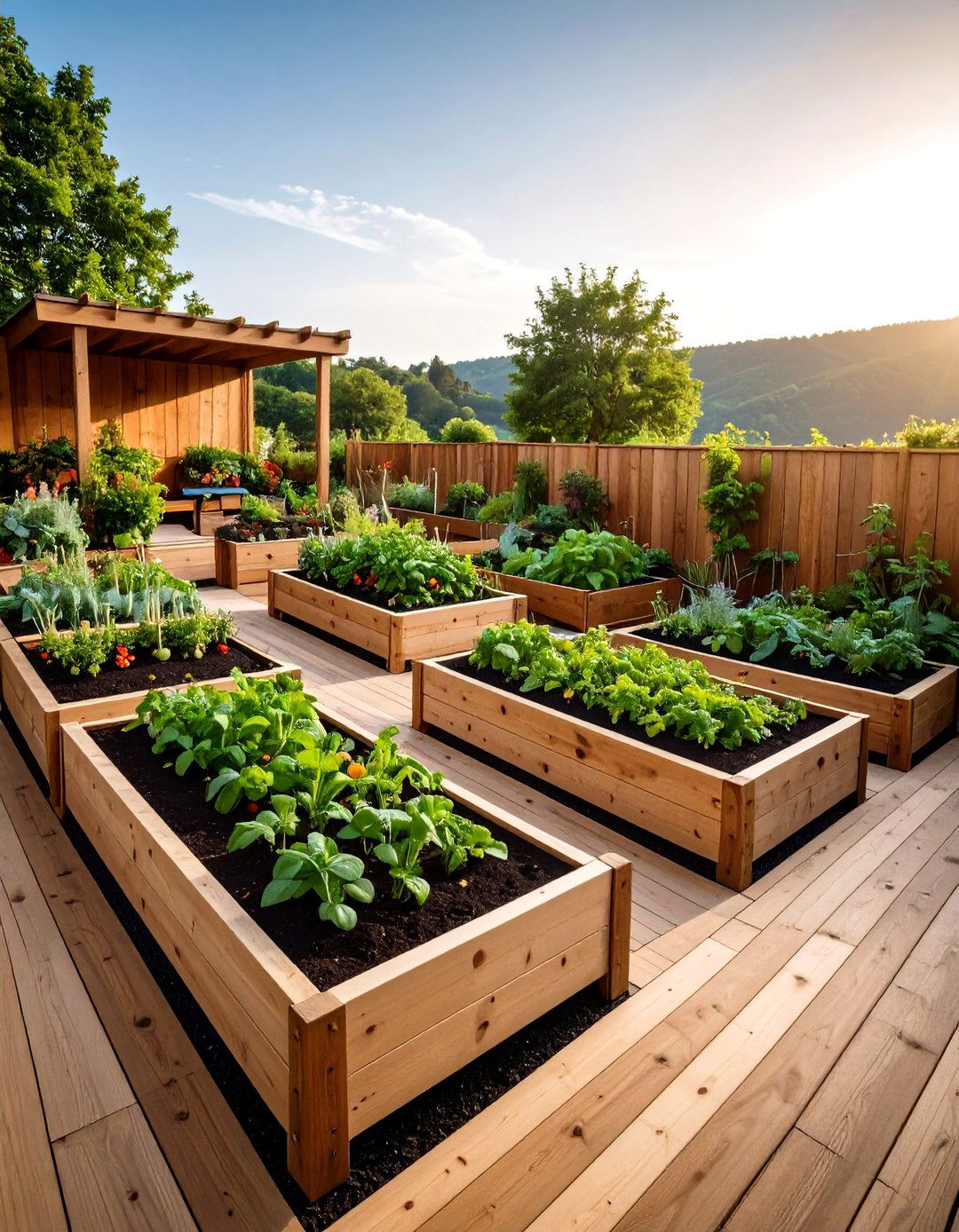
Timber sleepers—reclaimed railroad ties or sustainably milled hardwood beams—let you craft a hillside terraced garden that radiates rustic charm and speeds weekend construction. Cut lengths are pinned with 13 mm rebar and staggered like giant bricks, so each level becomes a raised bed that is easy on the knees and large enough for crop rotation. Because wood weighs far less than stone, you can man-handle components without heavy machinery, yet the chunky profile still holds back moderate slopes up to about 4 : 1. To extend service life, line the soil-facing side with breathable membrane and choose naturally durable species such as black locust or eucalyptus rather than chemically treated pine.
3. Gabion Basket Terraced Garden Walls for Industrial Flair
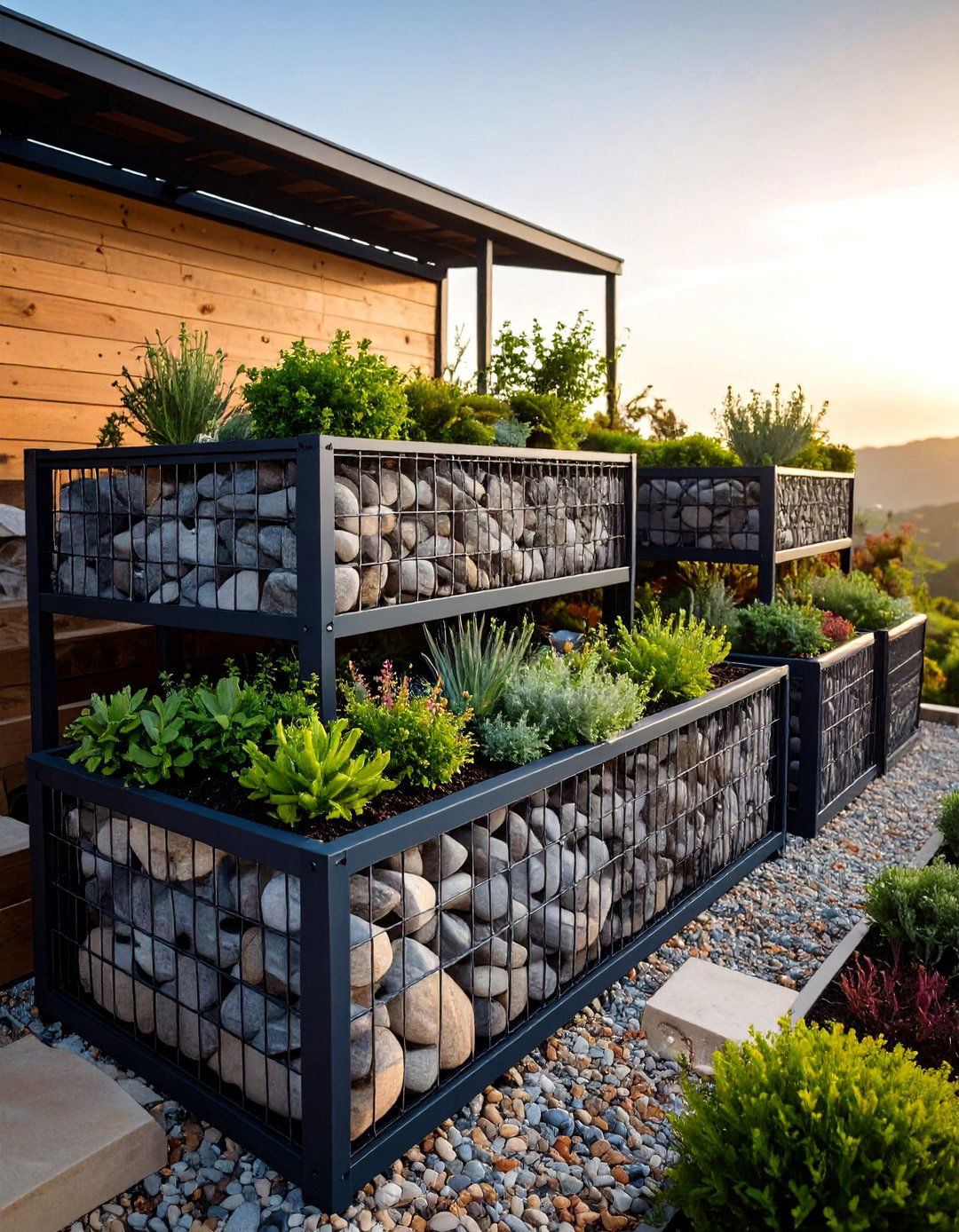
Unlike mortared masonry, gabion basket walls give a hillside terraced garden industrial swagger and drainage in one package. Wire cages filled with fist-size stones are stacked to the desired terrace height, and the voids between rocks dissipate hydrostatic pressure that can topple solid concrete. Because you can use site-won rubble or reclaimed brick to fill cages, the approach is budget-friendly and low-carbon. Curving the rows creates sinuous planting pockets where trailing thyme or succulents can spill through the mesh, softening the metal. A simple geotextile layer behind each basket keeps fine soil from washing out yet still lets roots explore the cool, moist interior voids.
4. Vegetable Staircase Terraced Garden Maximizes Harvest
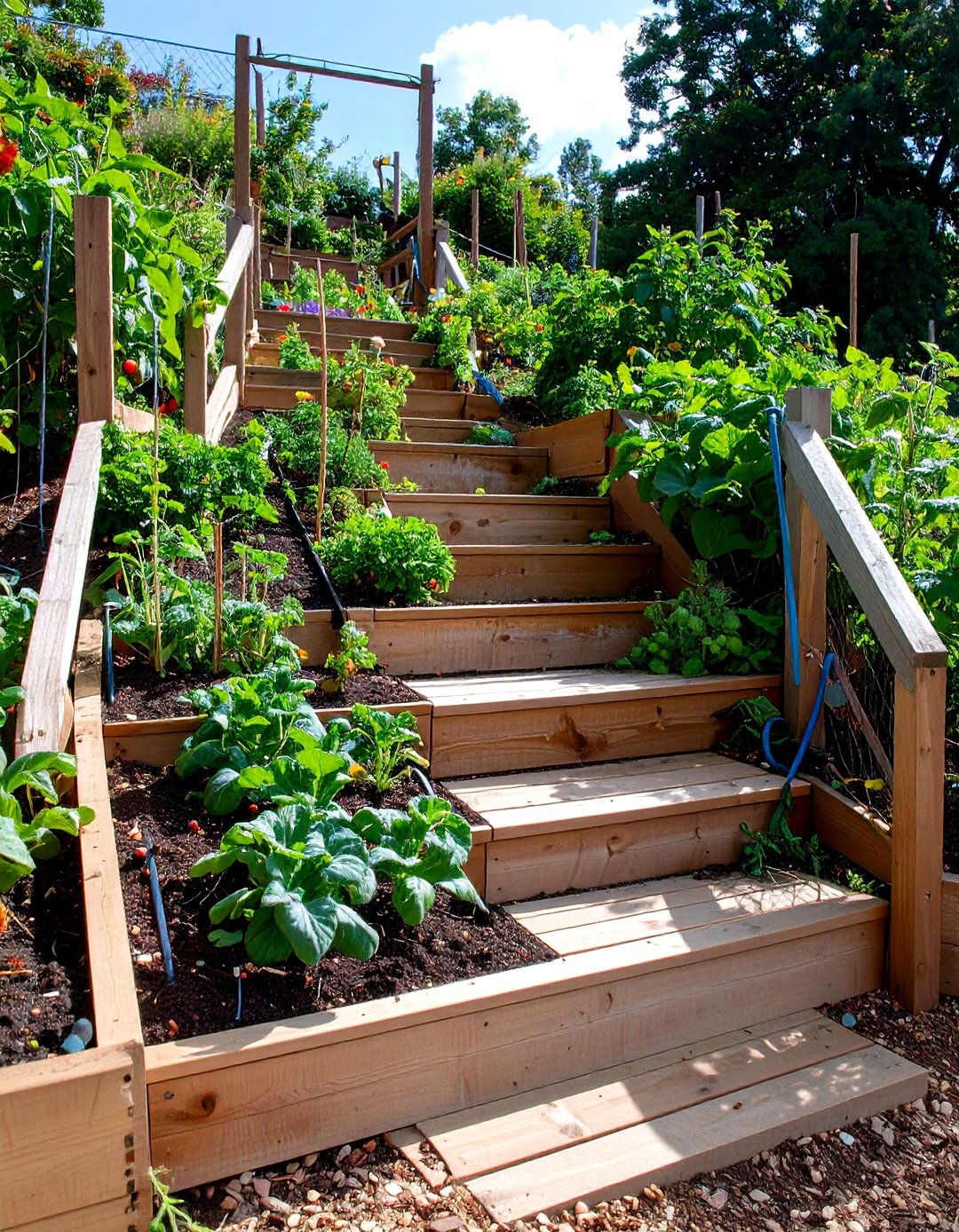
Consider converting a sunny incline into a vegetable staircase, where each terraced garden tread supports a different crop rotation. By sizing tiers just wide enough to reach the back without stepping on soil—about 90 cm—you avoid compaction and gain efficient walkways between beds. Install drip irrigation risers at the uphill edge so gravity feeds emitters along the row, reducing water waste. Because the slope naturally sheds cold air, tender tomatoes and peppers on upper decks mature earlier, while leafy greens enjoy slightly cooler lower benches. In one season, gardeners often report double the yield relative to scattered hillside patches once plagued by runoff.
5. Rain-Garden Terrace Captures and Filters Runoff

As storms race down a slope, building a rain-garden terrace halfway down slows the surge and filters pollutants before water reaches lower ground. Excavating a shallow basin 10 ft from structures and filling it with amended sandy loam allows ponding for up to 24 hours—the window experts consider safe for mosquito control. Native sedges, cardinal flower, and blue flag iris tolerate both inundation and drought, making the terraced garden visually lush year-round. An overflow pipe daylighted to the next level prevents washouts, while a stone spillway doubles as a path. The result is a living sponge that turns runoff into a floral spectacle.
6. Native Grass Terraced Garden Anchors Slopes Naturally
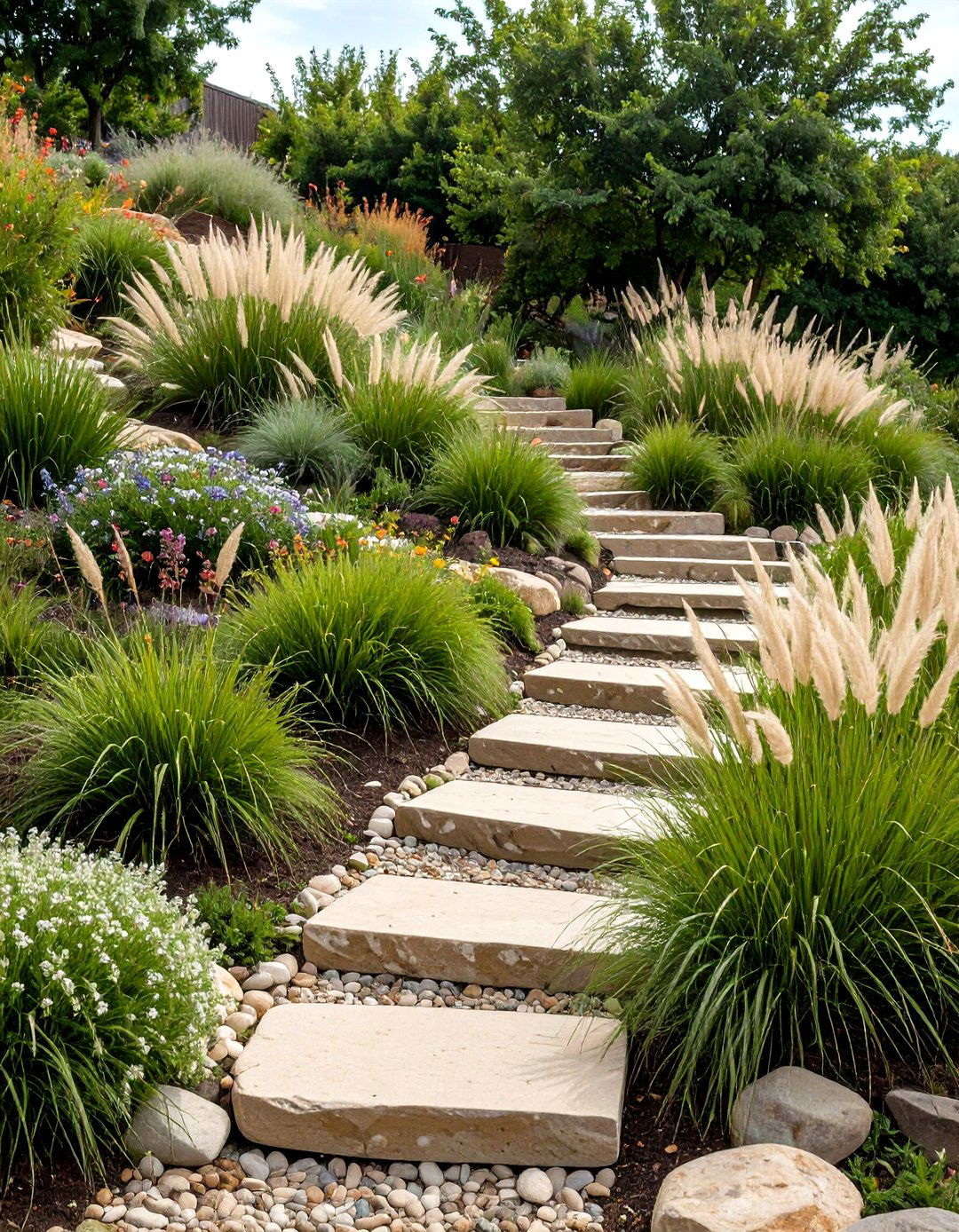
Grasses with dense fibrous roots can knit soil more effectively than many hardscapes, so design at least one hillside terraced garden tier as a native-grass meadow. Little bluestem, switchgrass, and fescues throw down root mats up to 2 m long, grabbing particles that heavy rains would otherwise steal. The waving foliage also slows wind erosion and requires only a late-winter mow, freeing weekends from constant trimming. Interplant with butterfly milkweed or coneflower for bursts of colour and pollinator habitat, and let seed heads stand into winter to feed songbirds. Over time the living lattice strengthens retaining edges and reduces your dependence on irrigation.
7. Wildflower-Step Terraced Garden Welcomes Pollinators

Unlike manicured lawns, a wildflower-step terraced garden transforms a once-slippery bank into a seasonal pollinator buffet. Broadcast a native seed mix onto lightly raked terraces in autumn; winter stratification boosts germination and roots bind quickly once spring rains arrive. Place straw wattles at the downhill edge during establishment to keep seeds from migrating. The tiered layout lets you showcase waves of colour—lupines on upper sunny shelves, black-eyed Susans mid-slope, and shade-tolerant columbine near the base—while hidden stone steps provide discrete maintenance access. After flowering, simply cut or scythe at 15 cm to encourage reseeding and suppress weeds. Over time, leaf litter builds an organic layer that further cushions rainfall and feeds soil microbes.
8. Zen Rock Terraced Garden Channels Japanese Serenity
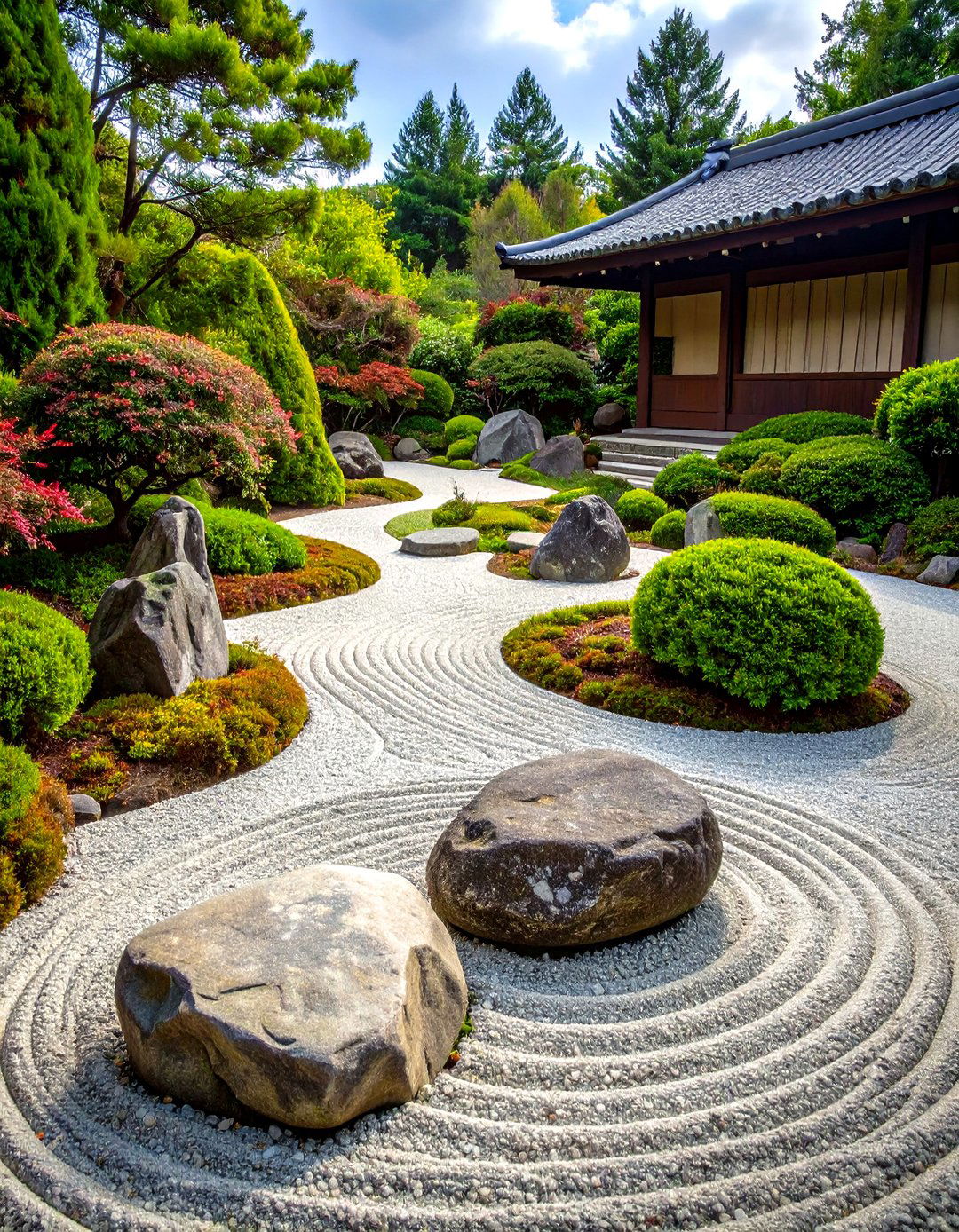
Looking for contemplative minimalism? A Zen-inspired rock terraced garden pares the slope to its essentials, using flat granite slabs to hold back gravel planes raked into soothing ripples. Boulders placed asymmetrically on alternating shelves evoke mountains emerging from mist, a technique long practiced in classic Japanese hillside courtyards. Use creeping juniper or moss between stones to blur edges and stabilise soil without breaking the monochrome palette. One hidden bench on the middle terrace invites tea and reflection, while a bamboo spout trickling into a basalt basin masks street noise and nourishes birds. Evening uplighting on the largest stone turns quiet structure into sculpture.
9. Vertical Herb Wall Extends Terraced Garden Flavor
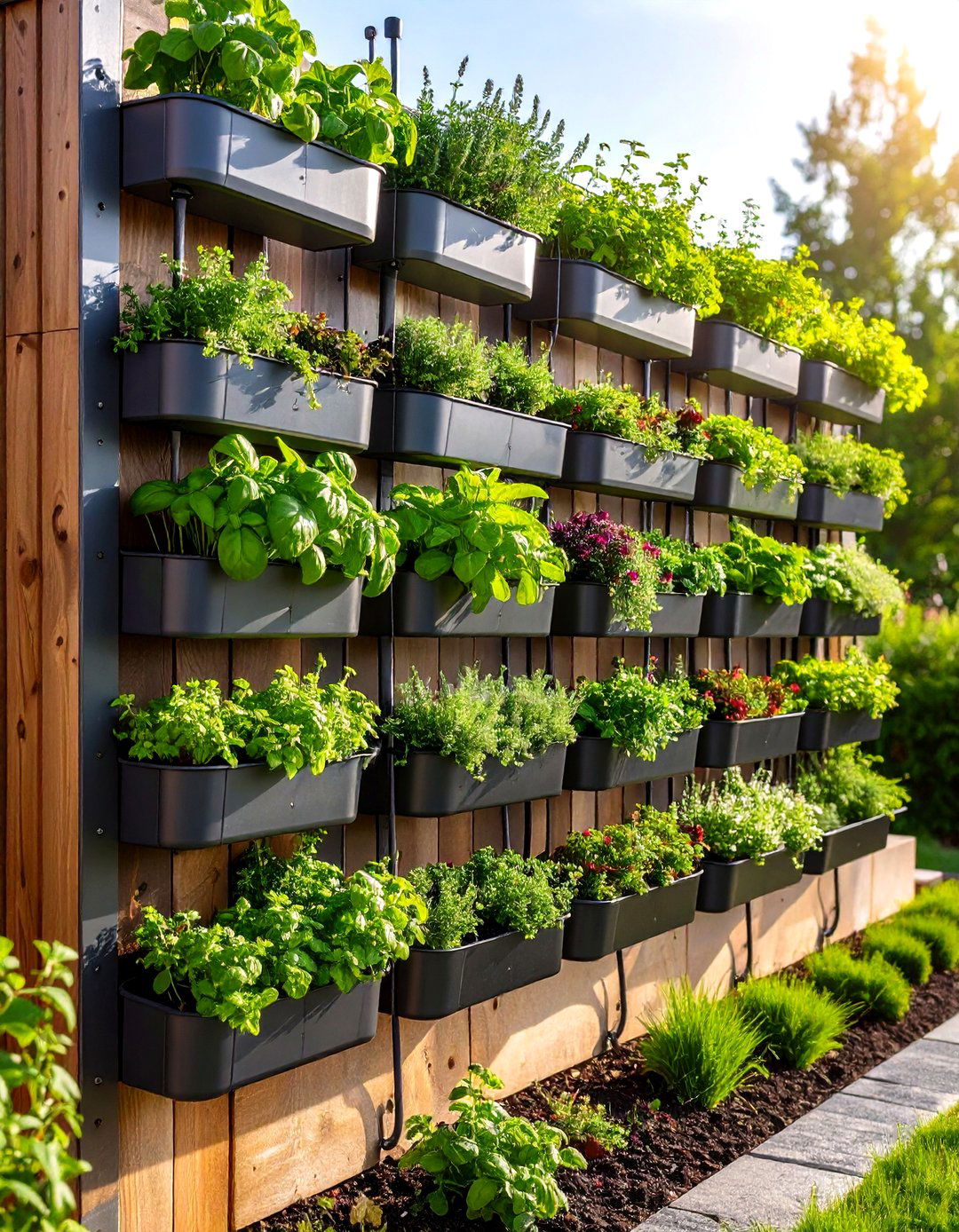
Short on footprint? Affix pocket planters or recycled gutters to the front face of a retaining wall and you’ve added a vertical herb pantry to the terraced garden without stealing a centimetre of bed space. Hooks or rail-mounted boxes let you rearrange mint, basil, or thyme for sun chasing, and the elevated height means fewer slugs reach your harvest. Drip emitters at the top course trickle through successive rows, so watering one line nourishes them all. Harvest continually to keep plants compact, and swap winter annuals for trailing strawberries or pansies when temperatures drop. Aroma literally pours off the wall every time you brush past.
10. Orchard Terraced Garden Protects Frost-Sensitive Fruit
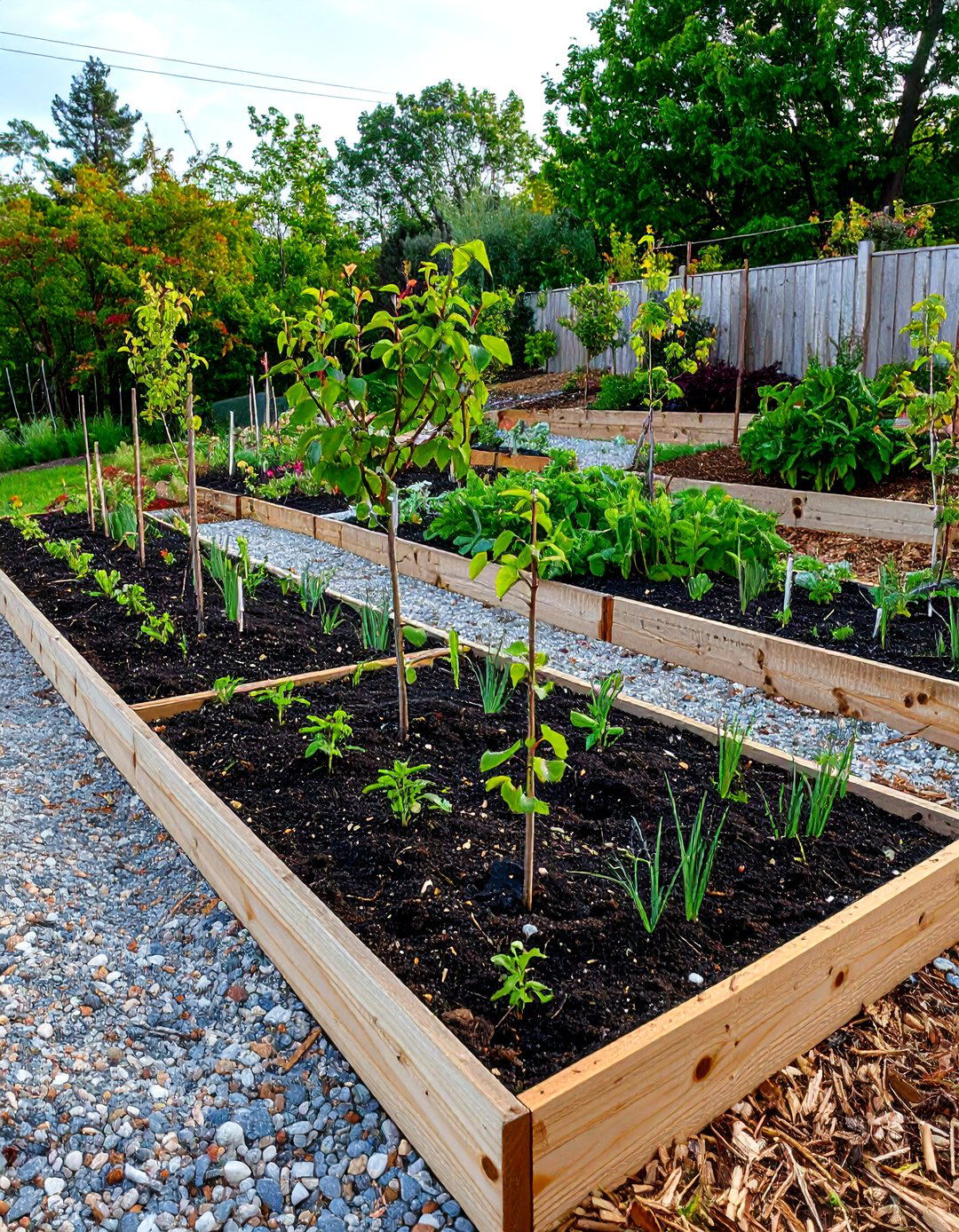
Planting dwarf and semi-dwarf fruit trees on sequential terraces grants them the cold-air drainage and sun exposure they crave while letting you underplant guild companions for soil health. Cold air sinks at night, so trees on a hillside terraced garden avoid the frost pockets that nip blossoms in low flats, boosting yields. Surround each trunk with nitrogen-fixing clover, bee-loved chives, and fragrant garlic to deter pests naturally. Terraces one metre deep give you easy picking access without a ladder and prevent fruit from rolling downhill. Mulch heavily and install a micro-sprinkler line for spring frost protection that coats buds in insulating ice.
11. Swale-Contour Terraced Garden Harvests Rainwater
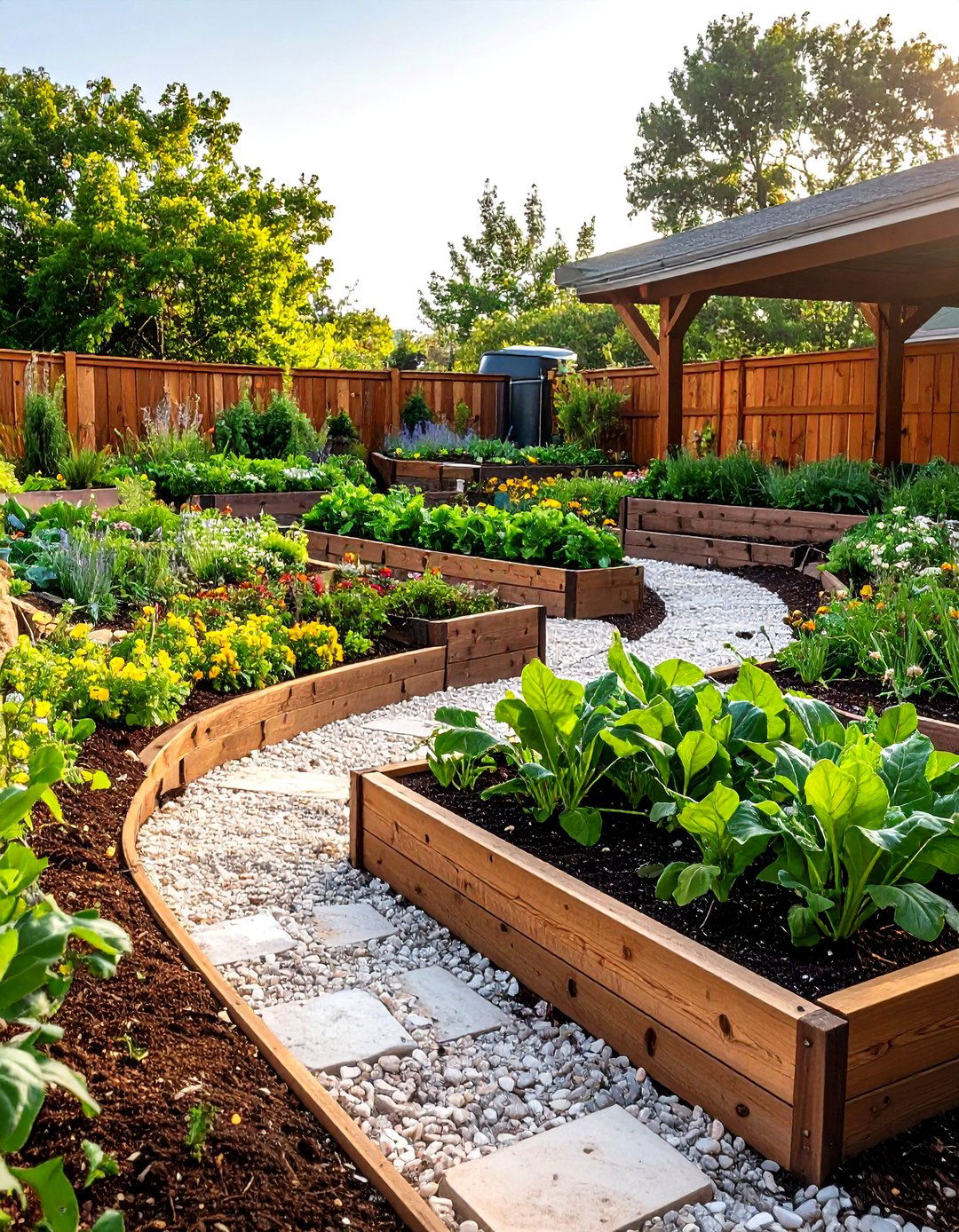
Permaculture wisdom says catch water where it falls, and a swale-contour terraced garden does exactly that. Dig level ditches along the contour—just upslope of each terrace wall—so runoff percolates rather than scours. The excavated soil becomes a berm that doubles as the next planting ledge, giving you beds and water storage with one effort. Mulch the swales deeply and plant slope-binding comfrey or sunchokes on the berm crest to mine nutrients and shade soil. In heavy rain, excess simply spills to the swale below, creating a cascading series of mini-reservoirs that keep crops hydrated even in drought. Over seasons, rich silt settles in the basins, turning each shelf into a self-fertilizing bed.
12. Modern Concrete Terraced Garden Exudes Minimalist Drama

Clean lines and light-grey concrete create an architectural statement when you pour cast-in-place walls for a modern hillside terraced garden. Formwork allows crisp 90-degree corners, while hidden steel rebar handles the earth pressure behind each level. Designers often integrate matching stair blocks and built-in benches so structure and furniture appear carved from one monolith. Against the cool tone, clumps of ornamental grasses and dark-leafed heuchera read like living sculptures. Embed low-voltage step lights inside the pour, letting cables run through conduit before concrete sets, to avoid surface fixtures and maintain the minimalist silhouette. Sealing the surface annually keeps stains at bay and preserves the crisp aesthetic for decades.
13. Built-In Seating Terraced Garden Doubles as Outdoor Lounge

A hillside does not have to be a stand-alone spectacle; it can be the seating itself. Carve one or two terraces a full metre wider than the others and top the retaining edge with smooth cedar bench caps fixed to hidden brackets. The rise becomes a comfortable backrest while the platform behind offers space for a fire bowl or low table. Plant scented lavender or dwarf fountain grass just beyond the seat to add fragrance and privacy without blocking the view. LED strip lights under the cap illuminate paths subtly, extending patio season into crisp autumn evenings. Rain chains at each corner channel roof runoff beside the benches.
14. Cascading Waterfall Threads Through Terraced Garden Rooms
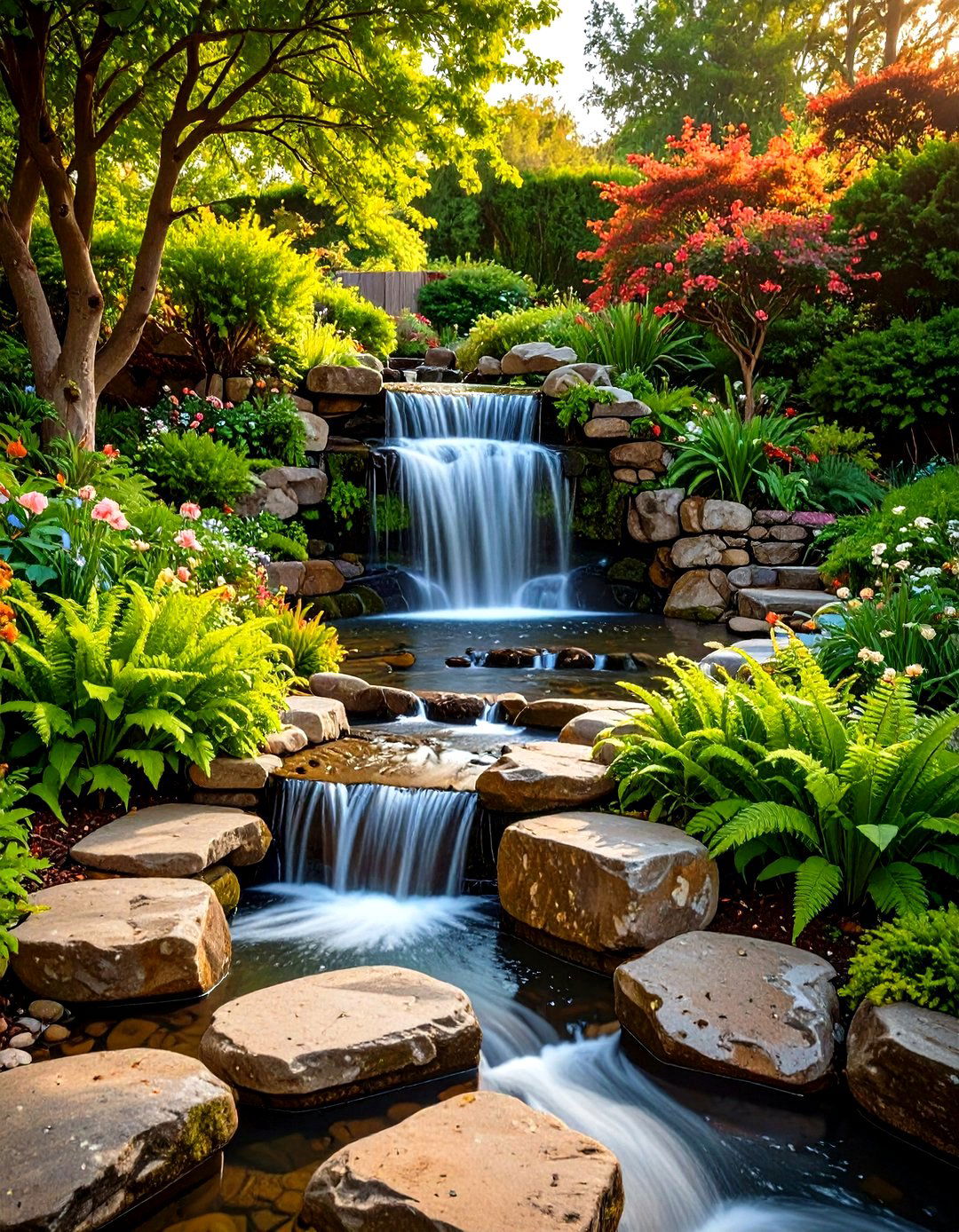
Water animates vertical space like nothing else, so threading a pondless waterfall through a hillside terraced garden creates sound, movement, and moisture-loving habitat. A recirculating pump hidden in a lower basin lifts water up flexible pipe to the top shelf, where it tumbles over interlocking stone lips into successive pools no deeper than 30 cm—safe for children and wildlife. The falling water oxygenates itself, discourages mosquitoes, and camouflages nearby road noise. Plant fern, dwarf astilbe, and creeping mazus at splash zones, and include flat stepping stones to hop across pools without crushing foliage. Auto-fill valves tied to a rain barrel keep evaporation in check.
15. Illuminated Terraced Garden Steps Enhance Night Safety
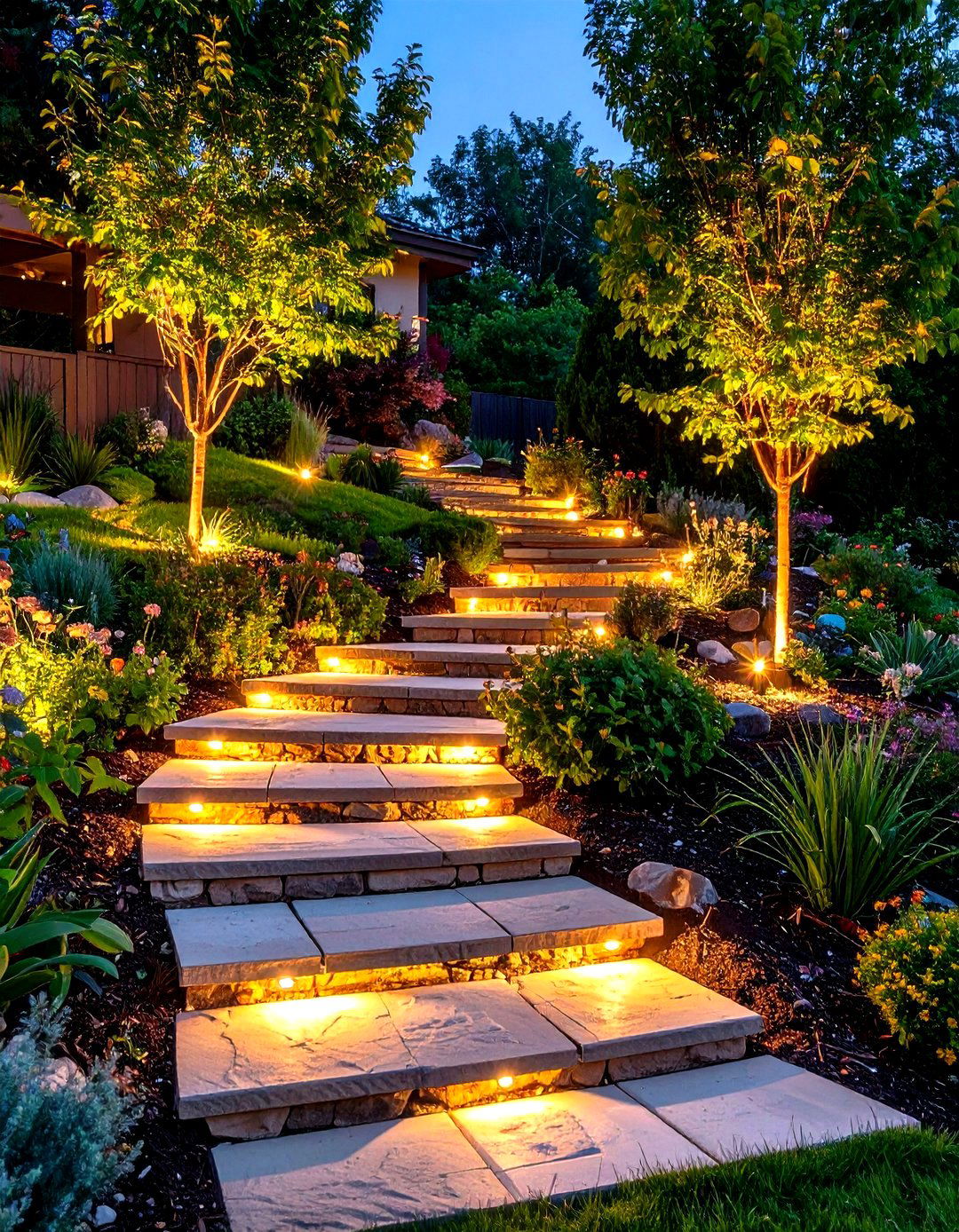
Dark terraces can morph into tripping hazards after dusk, and thoughtfully placed lighting keeps the hillside terraced garden welcoming around the clock. Core-drilled step lights recessed in risers cast a gentle wash across each tread, while down-lighting from nearby trees creates moon-shadow elegance without glare. LED technology consumes minimal power and lasts for decades, so wiring can piggyback on existing low-voltage systems. Select warm-white 2700 K lamps to preserve nocturnal insect rhythms and human circadian cues. For fully off-grid sites, solar-cap fixtures mounted on retaining edges recharge even under partial sun and turn on automatically when light levels drop. Smart timers prevent wasted energy.
16. Mediterranean Gravel Terraced Garden Loves the Heat
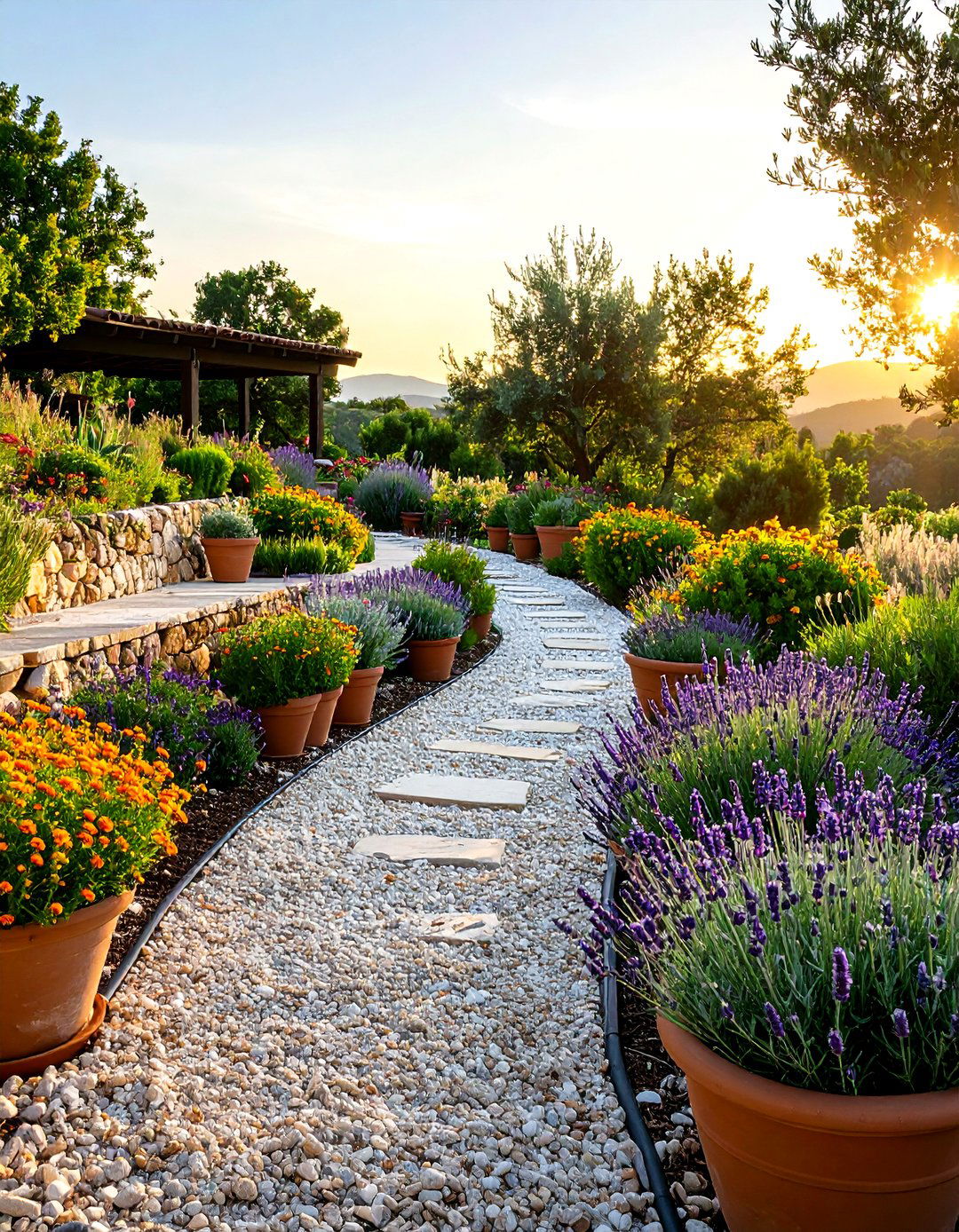
Owing to blistering summers, a Mediterranean-style gravel terraced garden turns heat into an ally rather than a stressor. Cover each shelf with 5 cm of sharp gravel to suppress weeds and bounce light back onto silver-leafed sages, lantana, and Russian sage—plants that shrug off drought yet erupt in colour. Reserve pockets of enriched soil near the wall footings for aromatic rosemary and low olive shrubs, whose deep roots exploit cooler subgrade moisture. Drip lines tucked beneath the gravel deliver targeted moisture during establishment, after which rainfall suffices. Terracotta pots of succulents punctuate corners and can be swapped seasonally to refresh the palette.
17. Prairie-Inspired Terraced Garden Invites Wildlife
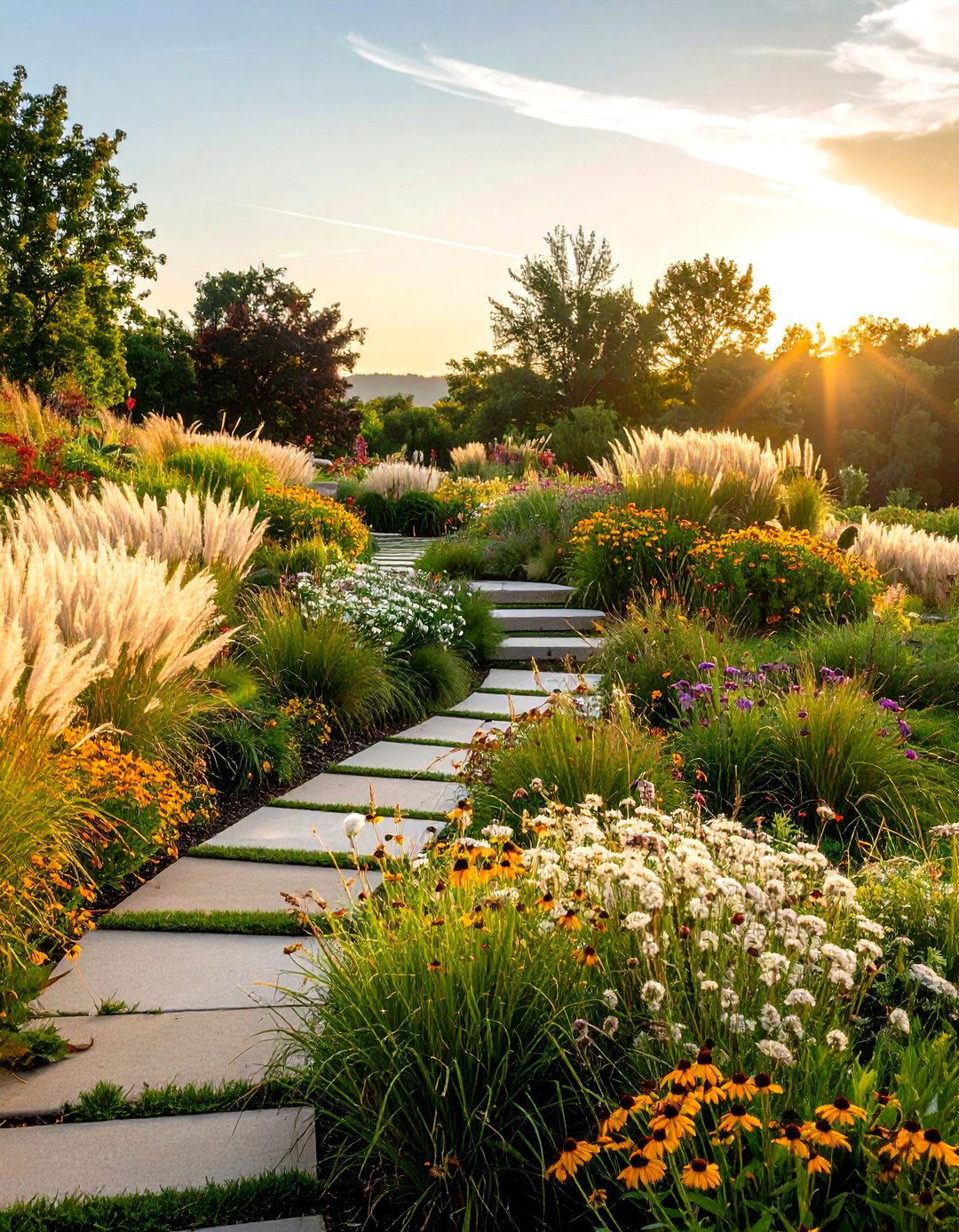
Surprisingly, a prairie aesthetic scales beautifully to terraces, creating layered interest from spring to snow and offering vital habitat. Mass grasses like little bluestem behind clusters of echinacea and rudbeckia, then accent with seed-rich switchgrass on the terrace lips to feed winter birds. Because each shelf increases edge effect, butterflies and solitary bees find more warm microclimates for basking. Leave autumn stems standing for shelter, cutting them back only in early March to expose emerging shoots. If fire risk is low, a controlled burn every few years can replace mowing and return nutrients, echoing natural prairie cycles. Mulch paths with decomposed granite for easy access.
18. Log-Edged Terraced Garden Reuses Storm-Felled Timber
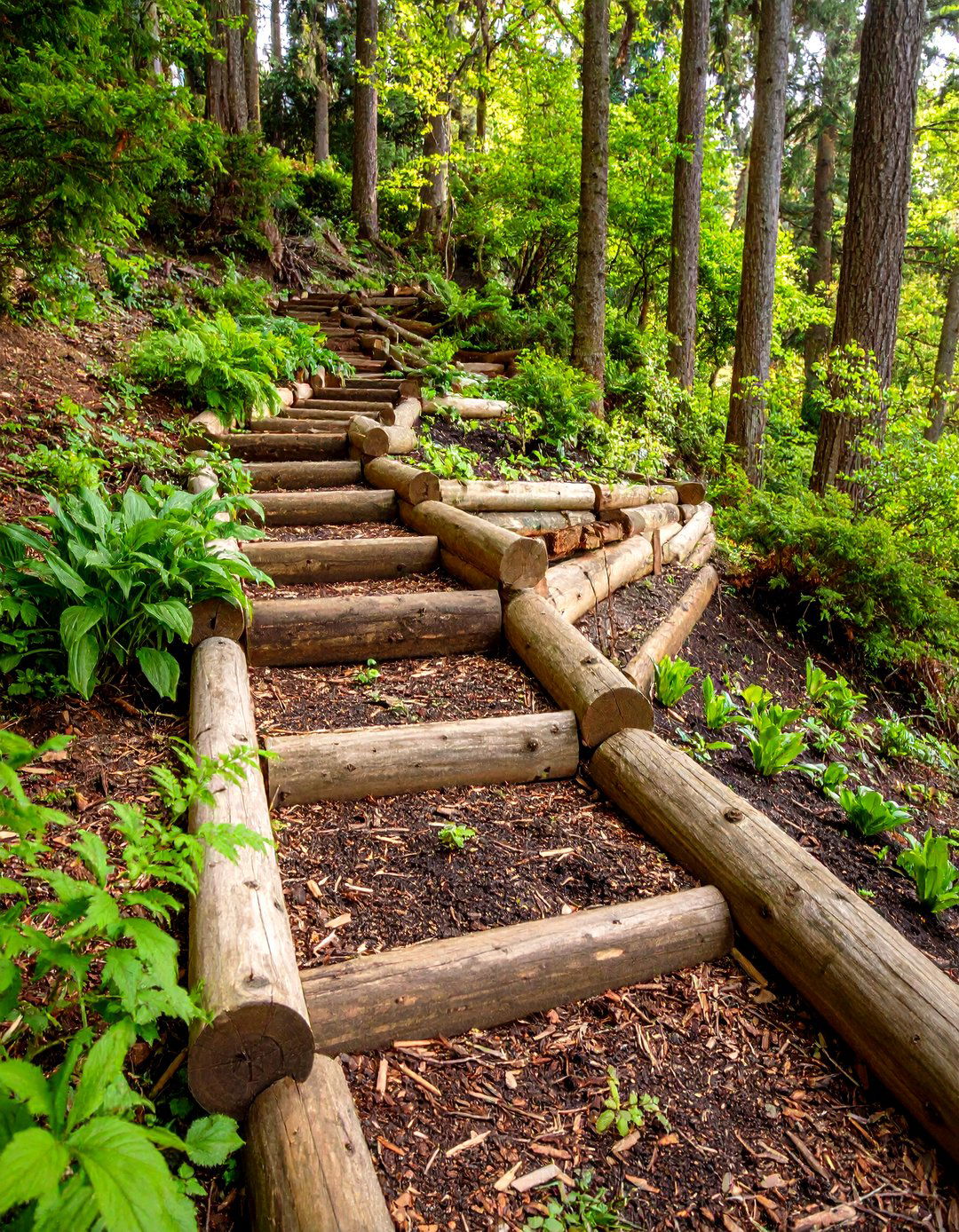
After a storm leaves wind-fallen trunks scattered across your property, turn that debris into structure by stacking logs into check-dam terraces. Lay the first course perpendicular to the slope, notch adjoining logs for stability, and backfill with a mixture of soil and wood chips to lock everything in place. Each additional course steps uphill, creating a rustic terraced garden that slowly decomposes, enriching the bed while holding back earth. Drill a few 20 mm holes through the logs to allow slow seepage and reduce pressure during heavy rains. Because no concrete or metal is involved, the terrace blends seamlessly into forested surroundings.
19. Stepped Lawn Pads Craft Playable Terraced Garden Zones
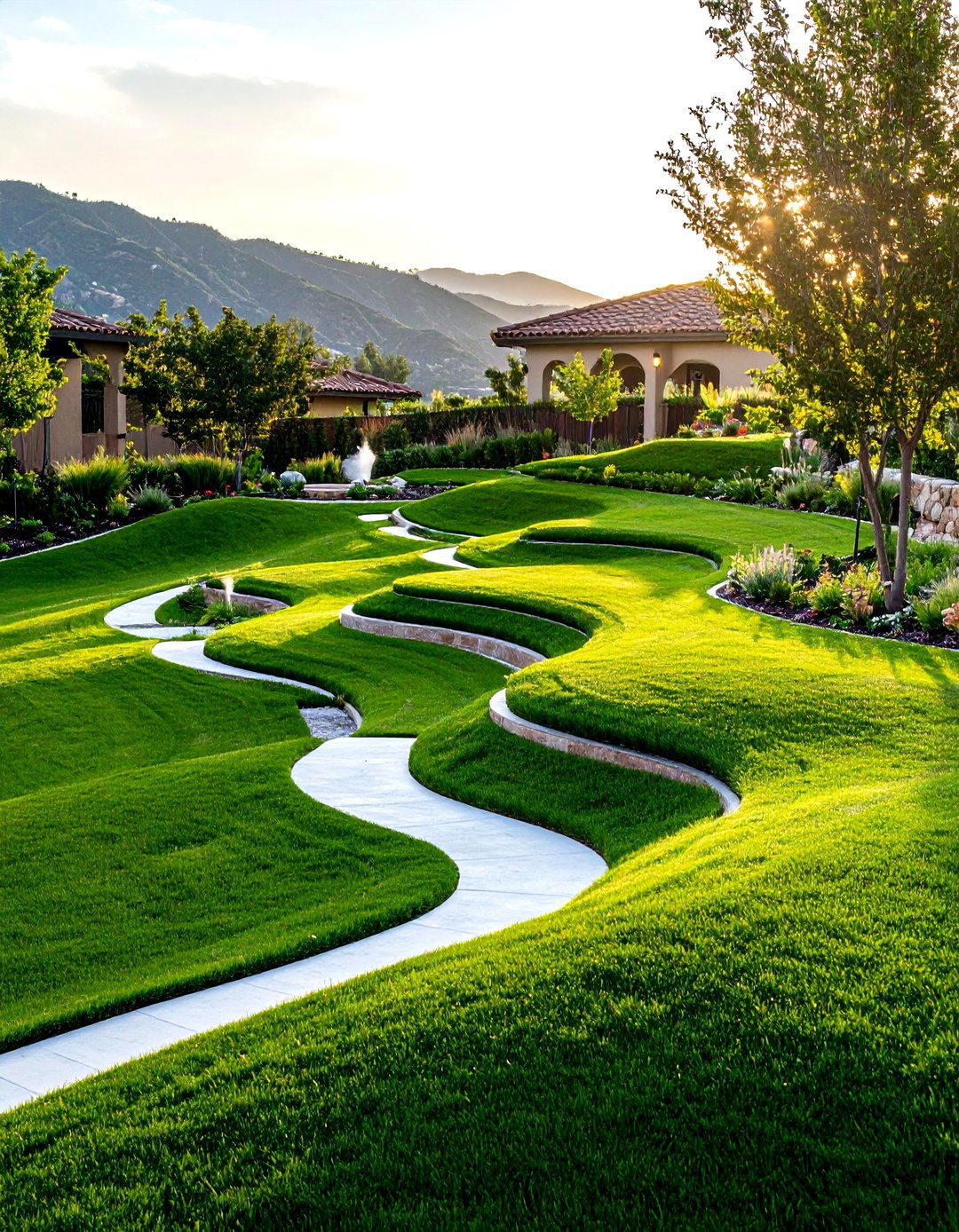
Children and pets rarely enjoy running on a steep incline, so carve a series of stepped lawn pads to convert the hillside terraced garden into usable play terraces. Walls just 30 cm high are sufficient to catch soil for turf; their low profile keeps costs down and sightlines open. Switchback paths knit the pads together and double as drainage channels, while in-ground sprinklers mounted at pad corners cover each level without overspray. Choose drought-resistant tall fescue or zoysia that tolerates occasional wear and lower fertility. The result is a tiered mini-park where soccer, picnics, and sunbathing finally feel natural. Maintenance mirrors a regular flat lawn.
20. Mixed-Material Terraced Garden Showcases Personal Style
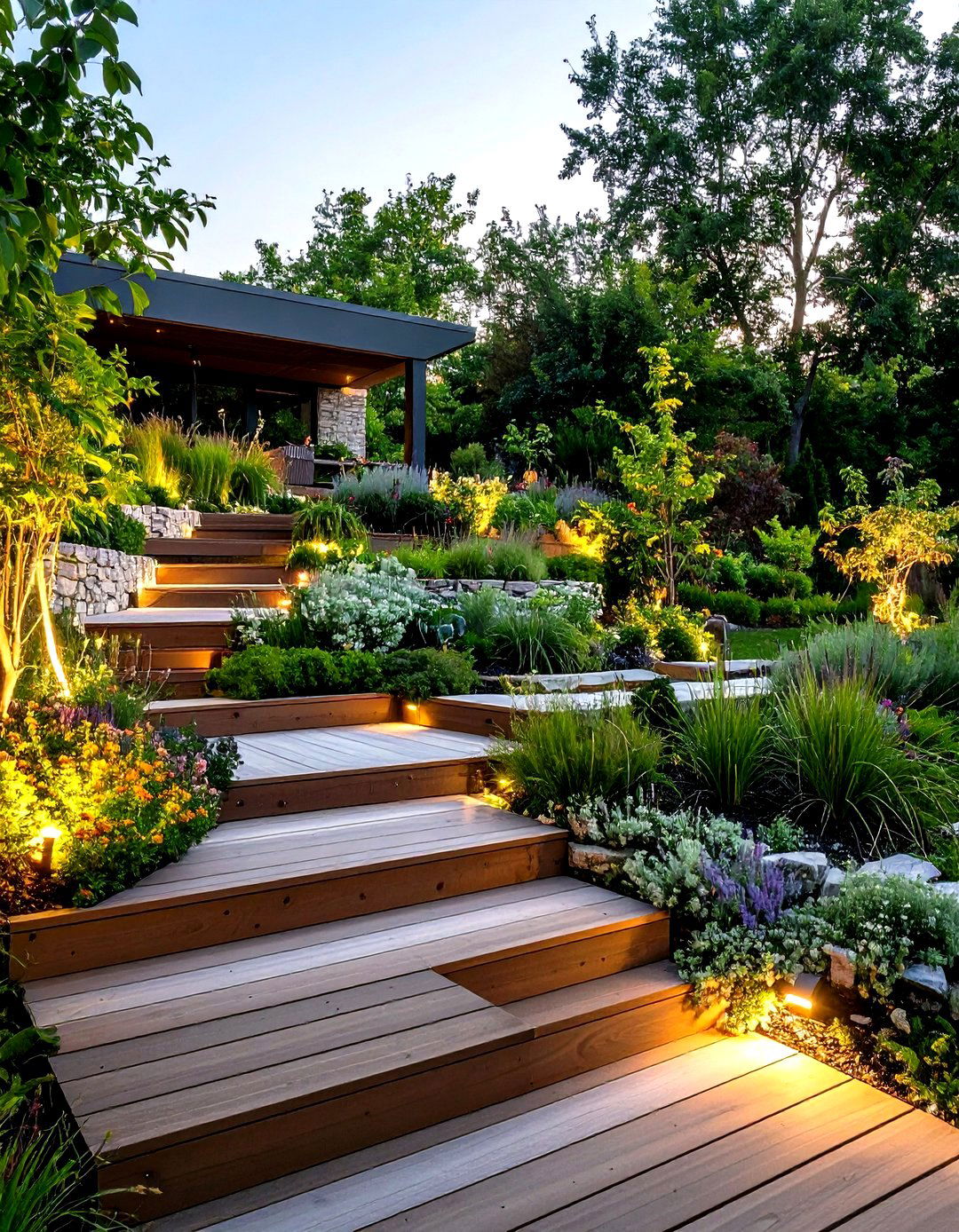
Finally, celebrate creativity by blending wood, stone, steel, and living edges across successive terraces, turning a simple slope into a curated gallery of textures. A corten-steel riser beside a reclaimed-brick wall sets up warm–cool contrast, while a gravel spillway slices through, guiding water and feet with equal grace. Built-in planters of smooth charred timber soften the metal’s patina, and airy cable railings keep the composition visible from patios below. Mixing materials lets you phase construction as budget allows and swap components over time, ensuring the terraced garden evolves alongside your tastes without wholesale demolition. Lighting accents can spotlight each contrasting surface after dark.
Conclusion:
Layering a slope unlocks possibilities that flat backyards can only envy. The twenty hillside terraced garden ideas above show how thoughtful engineering and botanical know-how can turn erosion risks into productive, beautiful, and resilient landscapes. Whether you gravitate toward Zen austerity, orchard abundance, or the dramatic lines of poured concrete, each solution begins with understanding water flow and soil support, then adding plants and features that match your climate and lifestyle. Embrace gravity as your design partner, and every rainstorm will irrigate instead of erode, every footstep will feel stable, and every view will reveal fresh depth. Your hill, once a headache, becomes a centerpiece.





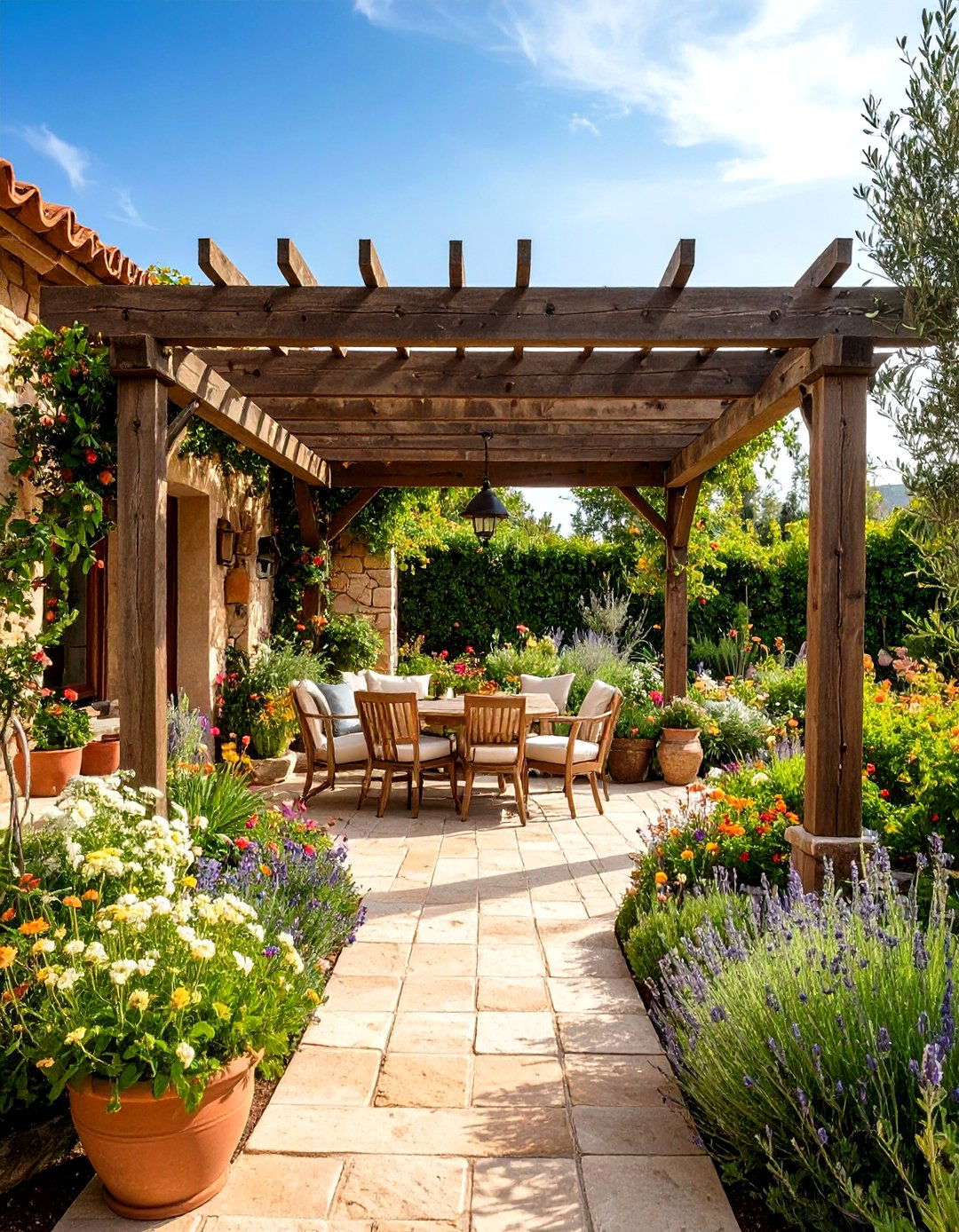
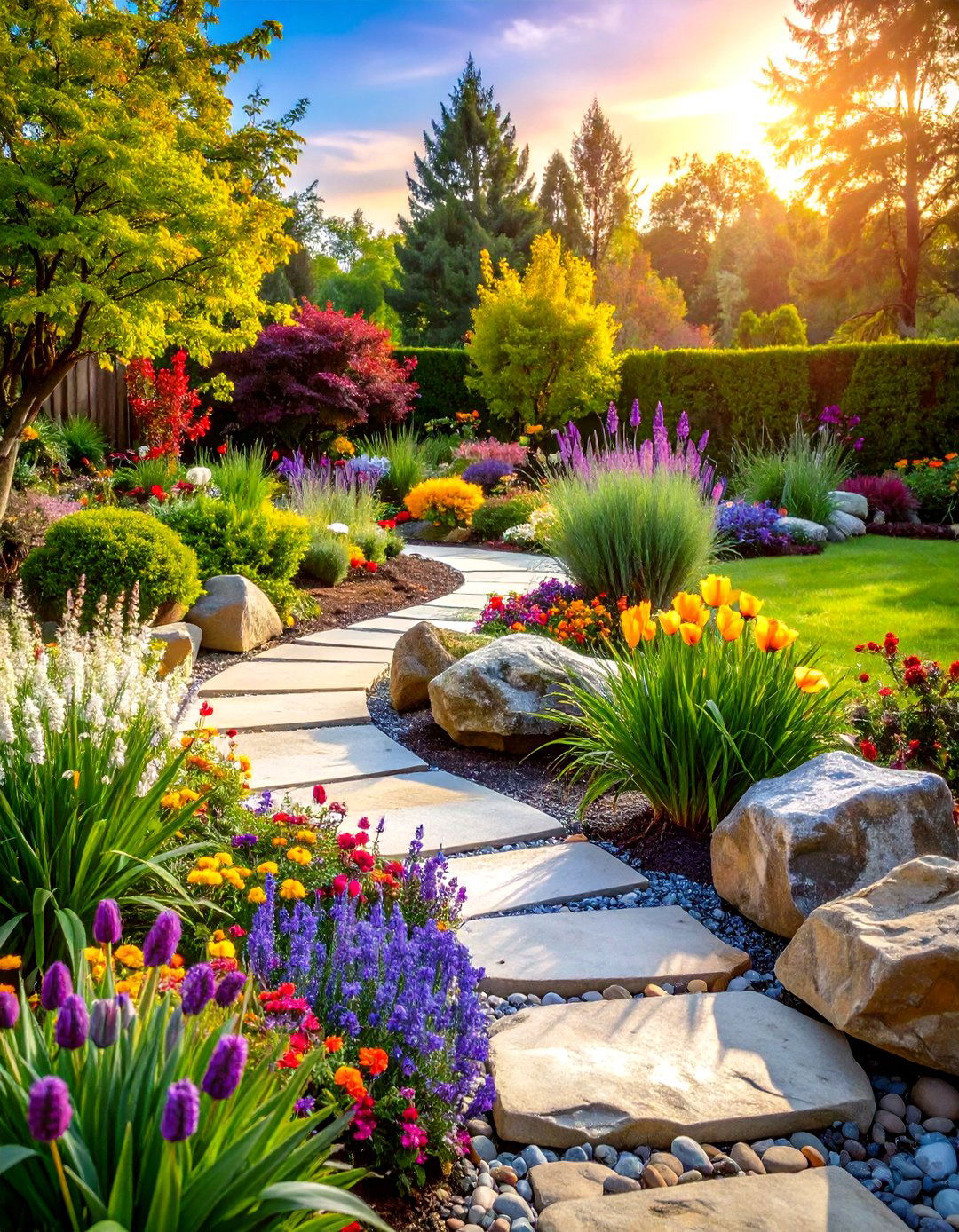
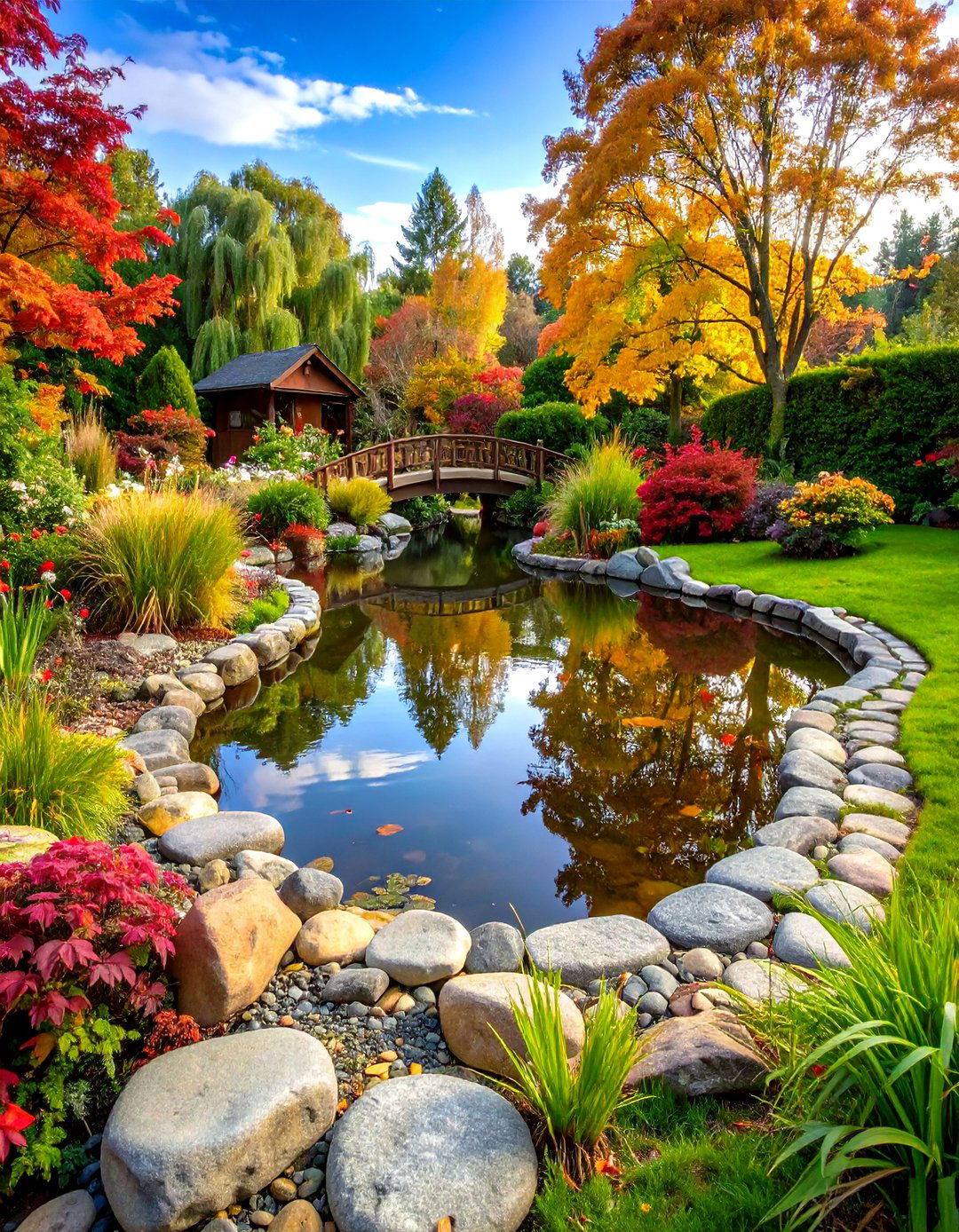
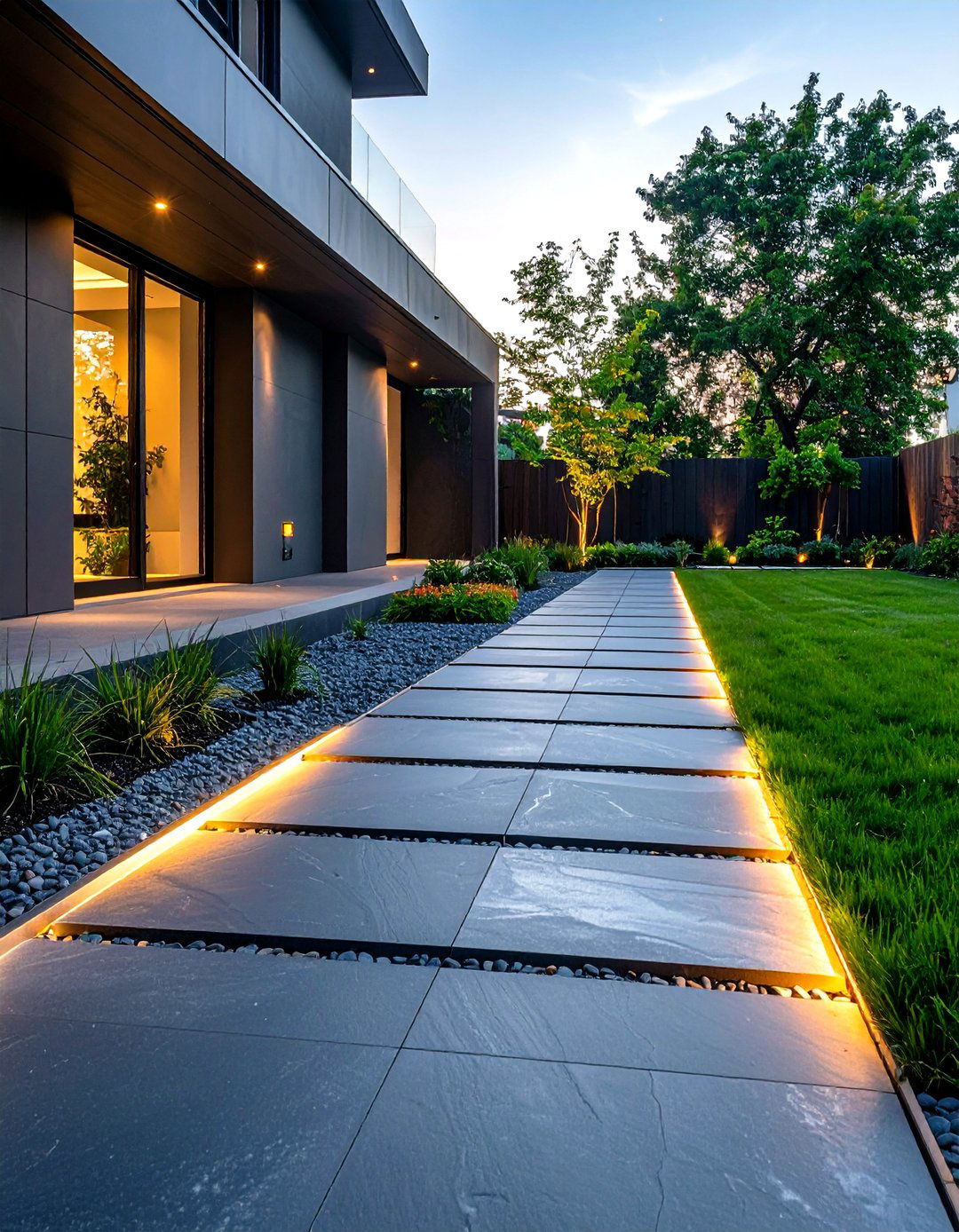
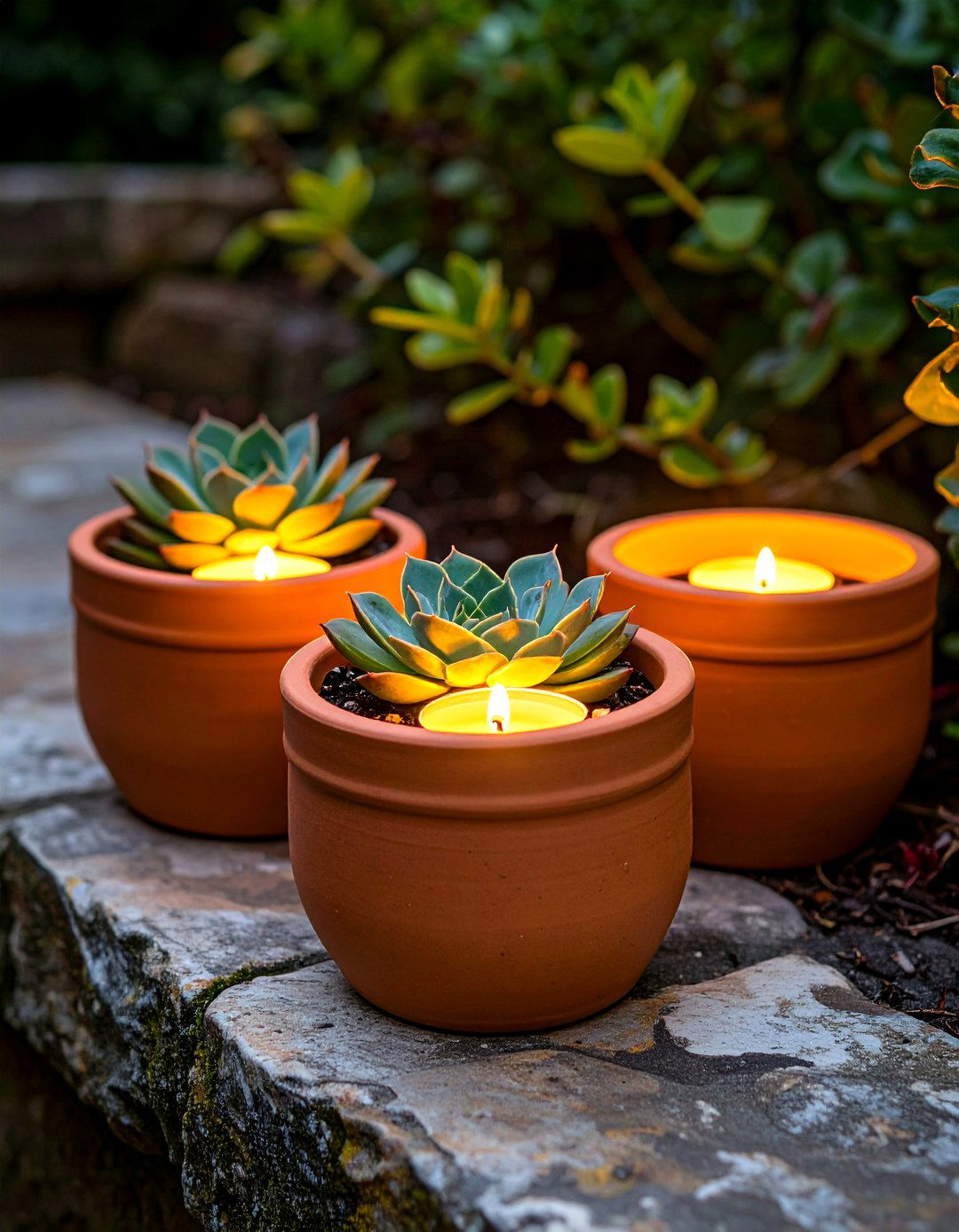
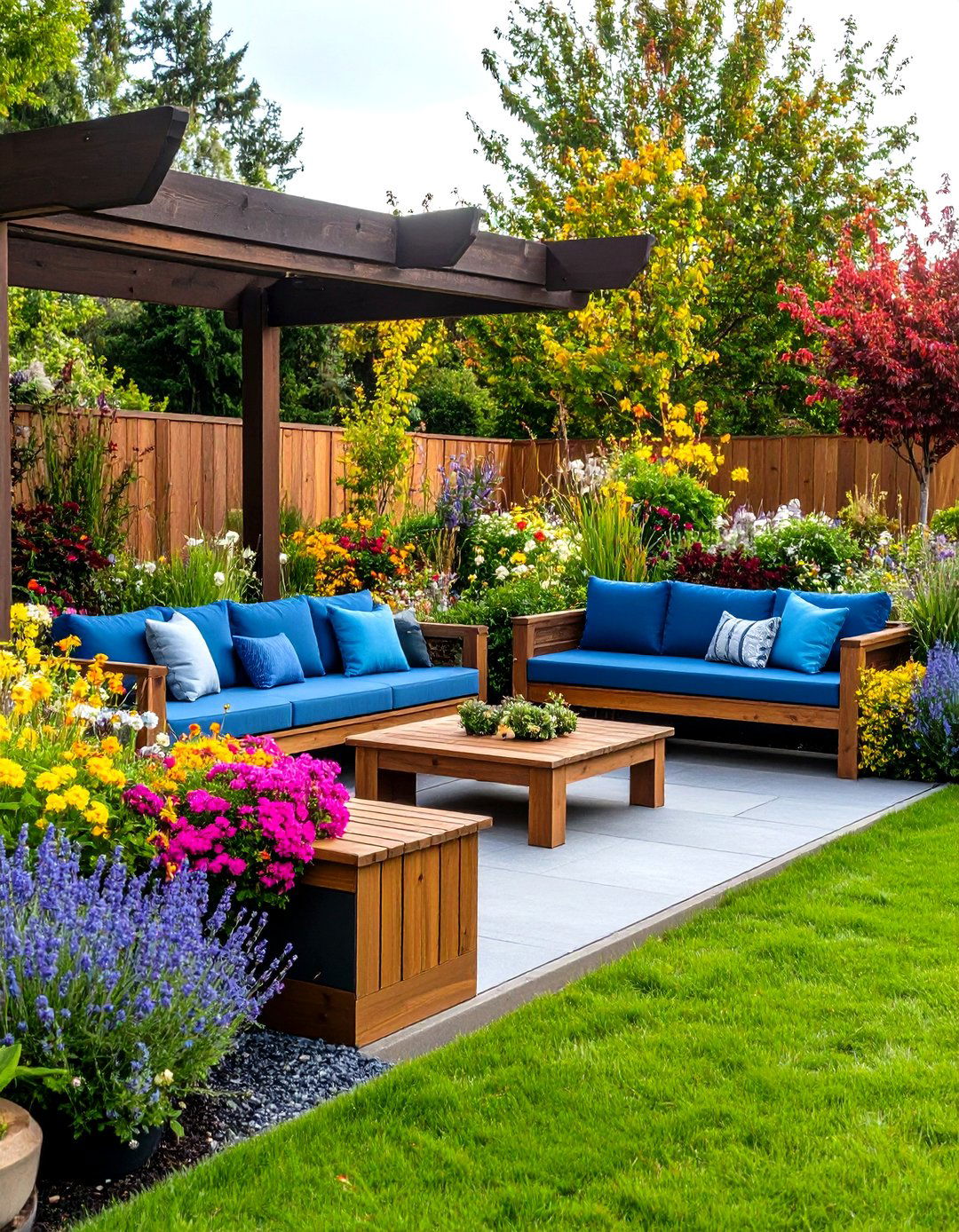
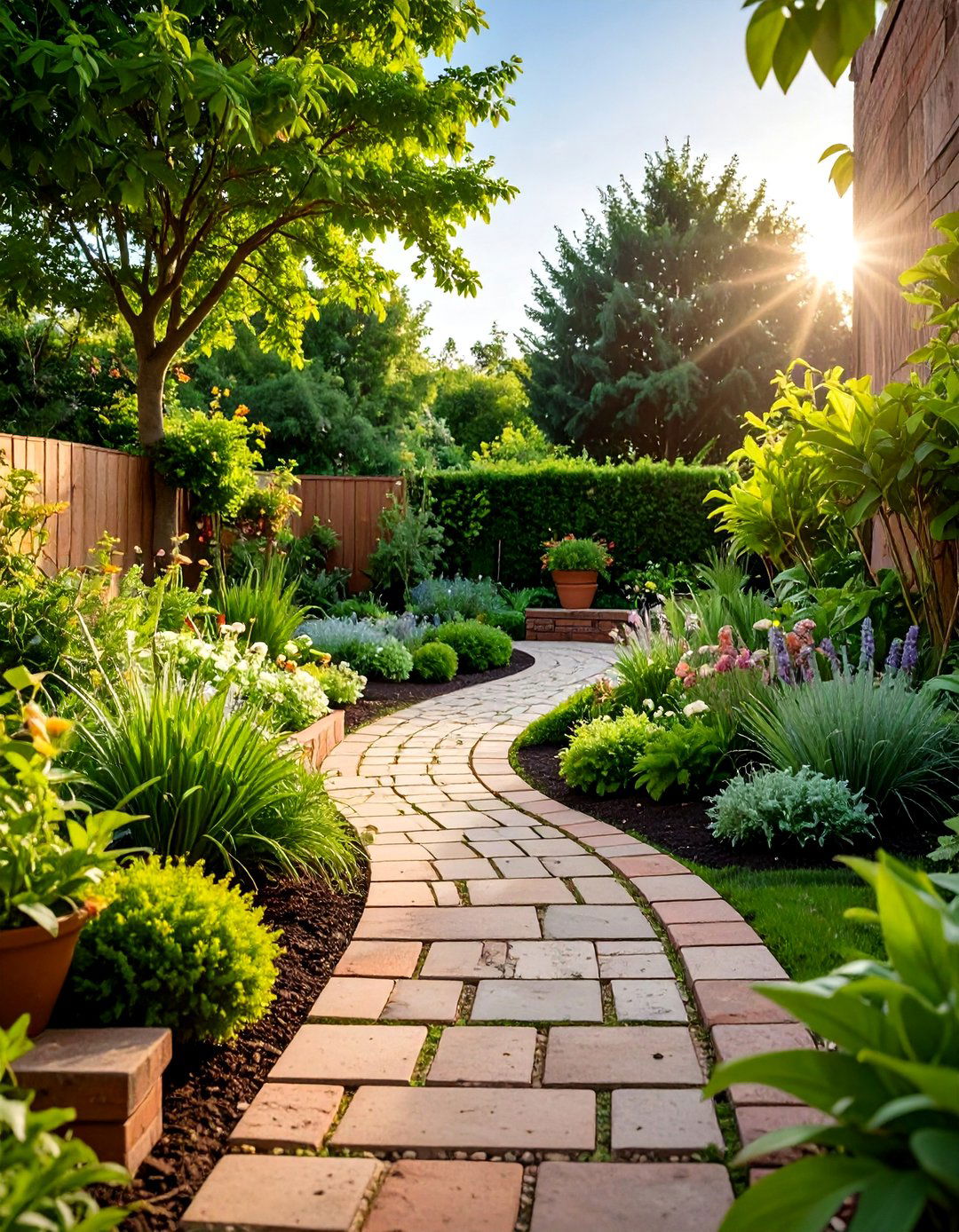
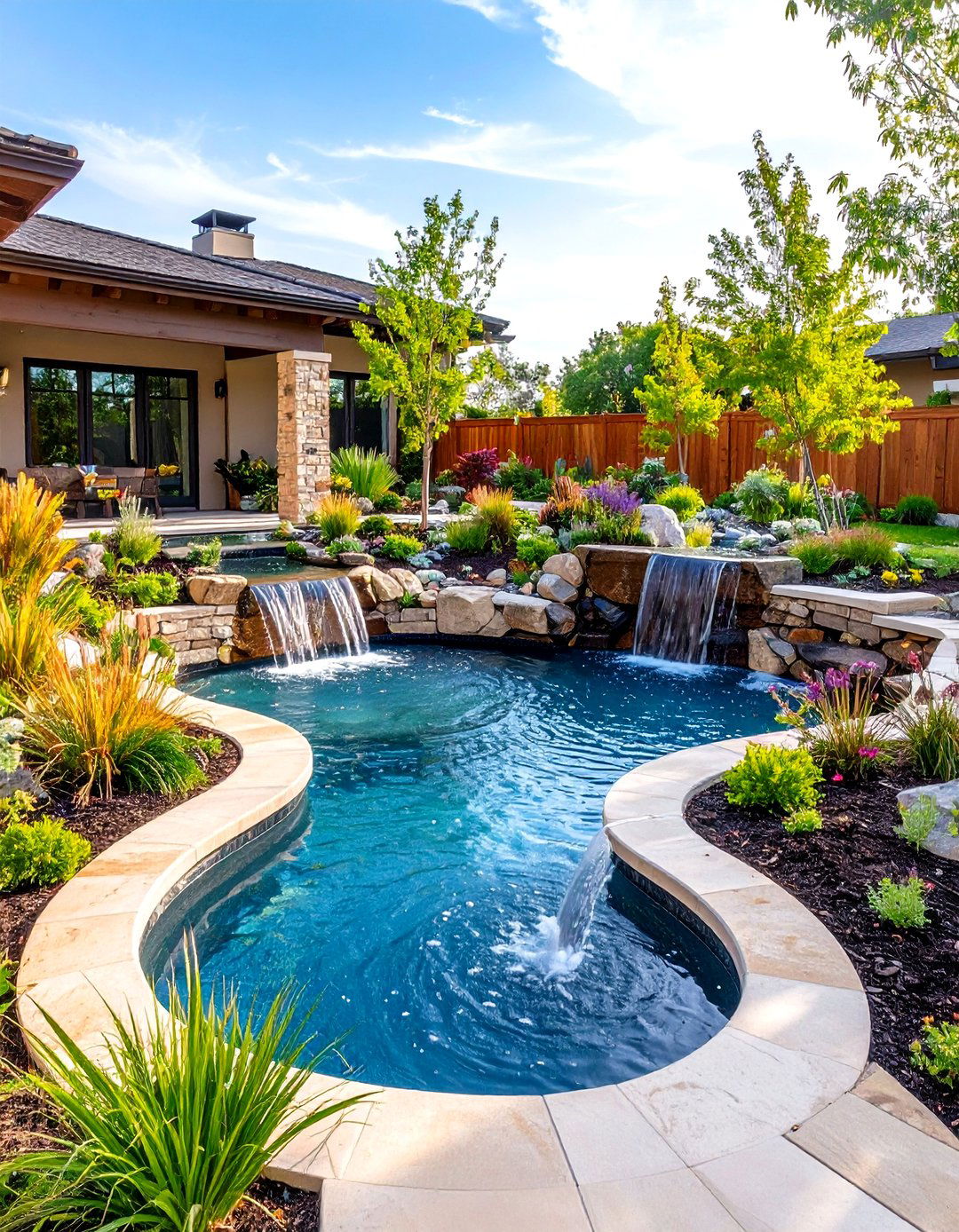
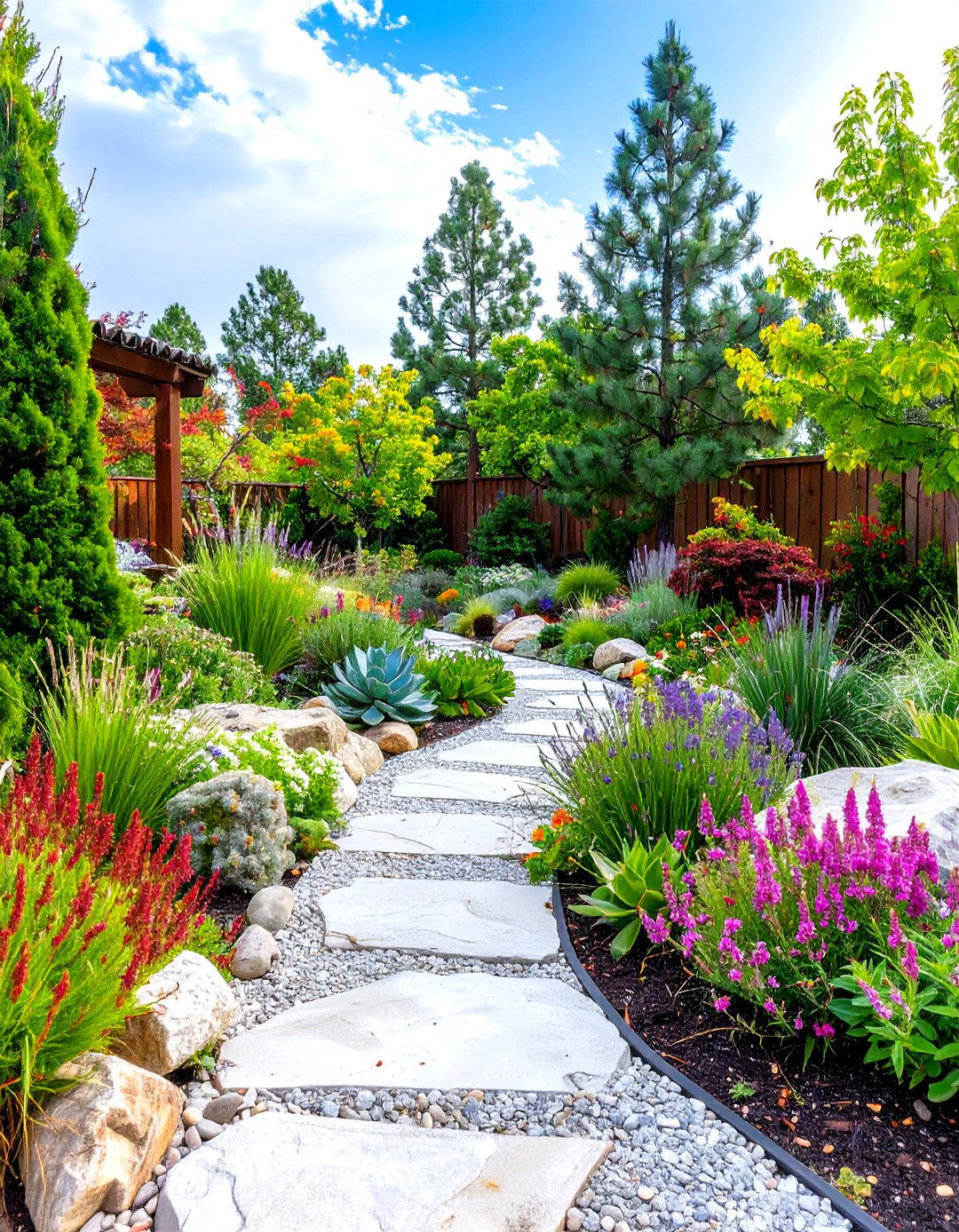
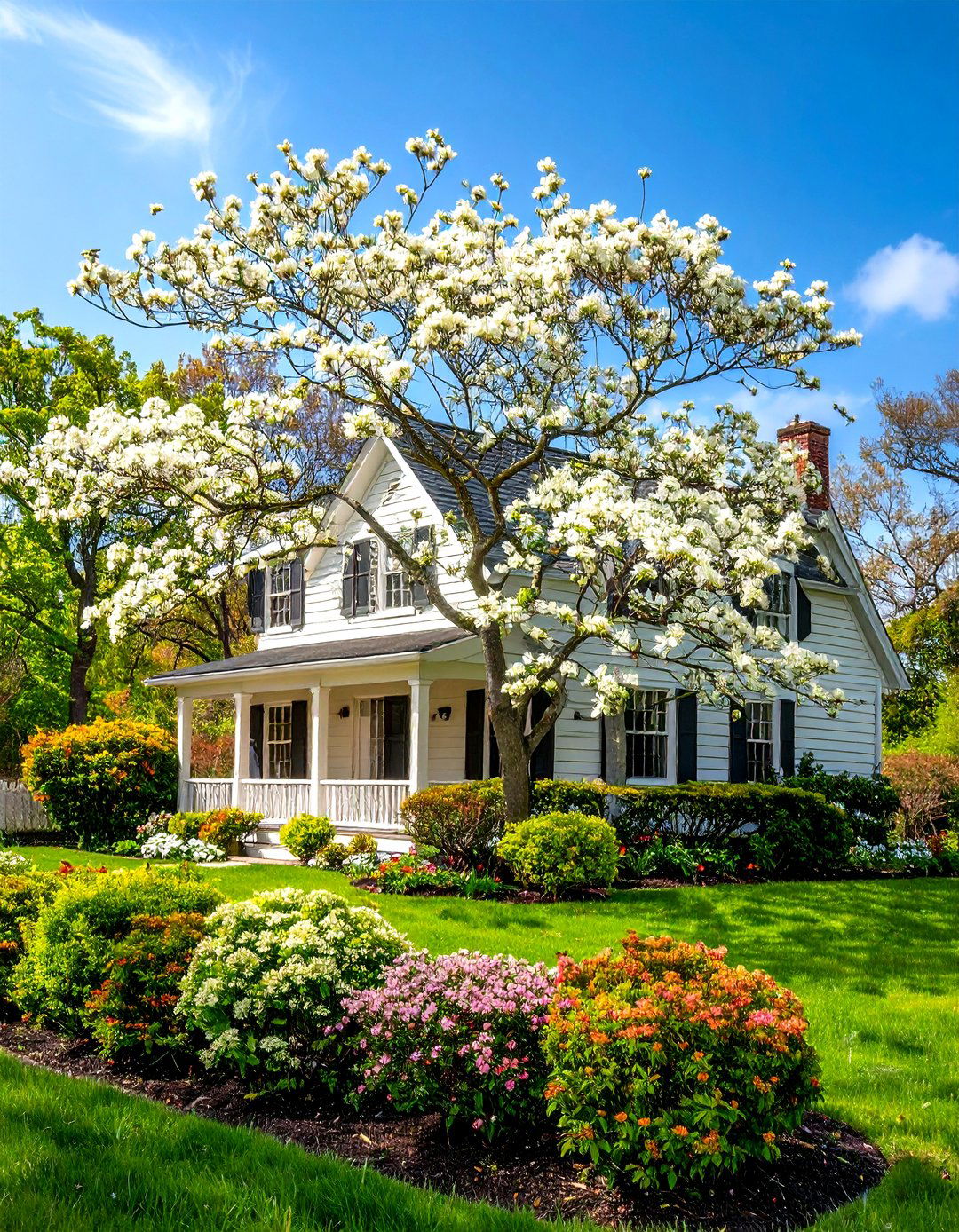
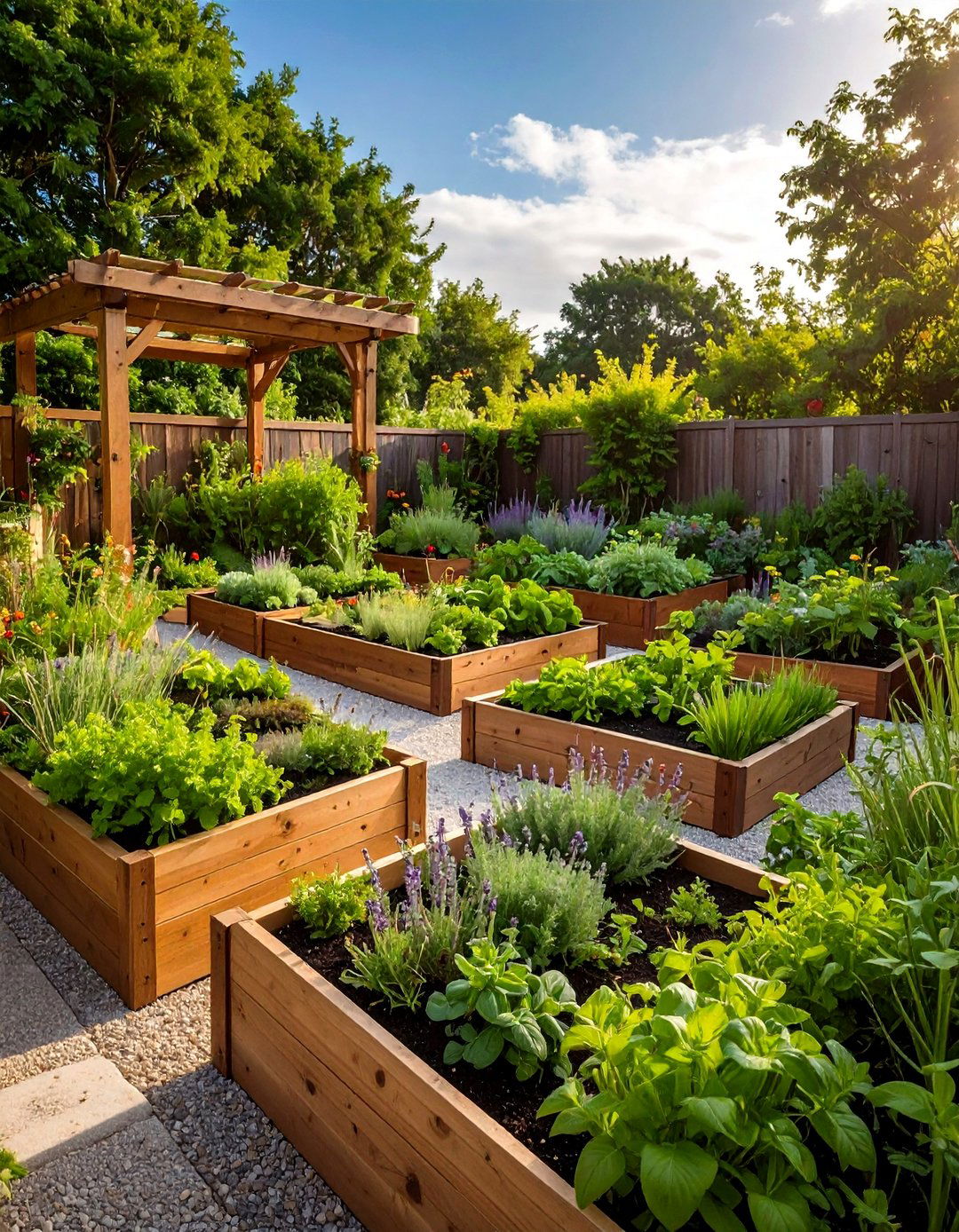
Leave a Reply